



















We have all seen it. Just because you bring people together to work as a team, doesn’t mean that they will be successful, or even productive. So, how do we create the conditions that support not only collaboration, but true collegial learning? Likewise, can we accomplish true collegial learning in virtual worlds as well as the real world?
In their Corwin Press book (Vojtek & Vojtek, 2009, p. 289), “Motivate! Inspire! Lead! 10 Strategies for Building Collegial Learning Communities” the authors contend that to build a collegial learning community, educators

must “hold themselves and each other accountable for working together to achieve their shared, morally compelling mission” (that is the important work they are doing), “through positive interdependence, reciprocal relationships, shared decision making, professional learning, and mutual responsibility.” They continue saying, “We must build the competence, confidence, and capacity that afford educators the ability to close the gap by collectively using their knowledge, skills, and talents to perform at optimal levels and successfully complete their mission.”
There are numerous ways in which educators are, in fact working together to build true collegial communities within the virtual world of Second Life (which, by the way, many have been doing since it began in 2005). In fact, hard to believe, this June marks Second Life’s fourteenth anniversary extravaganza at SL14B! Events will be held June 18-25. [More info at http://www.slcommunitycelebration.info/] Happy 14th Second Life!
We are excited to showcase several virtual Collegial Learning Communities in this issue of VEJ. First, VWBPE 2017 celebrated its 10th Anniversary in March and has left a lasting “Legacy” during this first decade of educators coming together to network, share, and learn with and from each other. Read the interview with the VWBPE Executive Committee and the interview with this year’s Thinkerer Recipient, Cynthia Colongne, aka, Lyr Lobo. Like VWBPE, check out the

Annual SLMOOC for a variety of learning opportunities.
Second, if you like history and enjoy exploring different cultures, you will want to learn more about the Virtual Pioneers. In this issue they showcase recent tours and activities from this past year.
Third, The Virginia VSTE VE PLN has launched their “Summer of Survival” in Minecraft. Educators are learning with and from each other how to work, play, and yes, even survive in this world in which our children spend a great deal of time. Minecraft is one of the most popular virtual environments where our students “hang.” This is your chance to learn together in a risk-free environment, while having fun and achieiving the confidence you need to bring Minecraft into your classroom to motivate and actively engage students in quality learning experiences.
Fourth. simulations have become one of the best ways in virtual worlds to learn with and from each other. In this issue, Austin Tate takes us behind the scenes to see how the Virtual Oil Rig simulation is being used in the School of Engineering at the Robert Gordon University (RGU) in Aberdeen, Scotland.
Finally, ISTE VE PLN has named their Pioneer of the Year, Beth O’Connell (RL) and Beth Ghostraven (SL). Beth is what Doug Reeves would call a true “Hub” (that go-to person). She is actively engaged in many of SL’s flourishing collegial communities and daily shouts out activites, meetings, and events across the metaverse through her stream of communi-
cations. What would we do with out her?
I started by asking the question, “can we accomplish true collegial learning in virtual worlds?” The answer is, unequivocally, “YES!” As demonstrated in this issue of VEJ, we have and we are - perhaps even more successfully and competent than many real world learning communities.
The passion and enthusiasm, the quest for knowledge and skill-building, while exploring and sharing what we are learning and what we are doing with others has truly created a network of collegial communities throughout the metaverse. Even more, it isn’t just the learning but the true friendships that have been created. It’s all about relationships.
That being said, this is the first time in years that I will not be at the ISTE17 Conference in San Antonio June 24-28. I am already having withdrawls. I will greatly miss seeing all of my virtual friends in real life. But as you will see from the list of activities and events it is going to be a GREAT conference!
I plan to be at ISTE Headquarters in SL on Tuesday afternoon, June 27th during the playground from noon to 3:30 pm (slt), 2-5:30 pm (Central Time) and look forward to seeing you then. If anyone is around in SL I hope you will join us at ISTE Headquarters. What a great opportunity to be able to connect even while we are miles apart! Looking forward to seeing you virtually. Enjoy this issue of VEJ, and devour every byte!
Keep Smiling
Roxie Neiro (SL), Rosie Vojtek (RL) SL14B Cake Stage. Happy 14th Anniversary Second Life! May we all have many more!


By Scott Merrick, aka OptoMystic & Andy Wheelock, aka Spiff Whitfield
Beth, Beth, Beth. You are our rock, our touchstone, our keystone. You work so hard and so consistently as our “unofficial liaison between education groups in SL (ISTE, VSTE, Virtual Pioneers, VWER, etc.)” and as our very own Communications Chair. We are pleased to bestow upon you the ISTE VEN Virtual Environments Pioneer of the Year Award for 2017!
We know, you don’t need another wall plaque. But there it is. Knowing that you can’t be at ISTE17 but with us (as always) virtually, we are glad that you can join us early Sunday morning for the ISTE17 PLN Awards Breakfast in the Henry Gonzalez Convention Center in San Antonio, Texas. Through the magic of virtual environments, you can wave at the bleary-eyed breakfast attendees, as we honor your hard work. We’ll mail you the plaque, or send it home from the conference with someone who is a Washington, DC neighbor.
https://www.facebook.com/school.librarian is one way people can try to keep up with you. Joining the G+ ISTE Virtual Environments Network will also connect interested educators. If you are not in Second Life, what? Get yourself an avatar. If you are, Join the ISTE Virtual Environments Network group for regular communications of the sort we like to call “Beth Spam.” It will keep you in the know about not just ISTE, but VSTE, Real Life Learning in Second Life, VWBPE events, and much, much more.
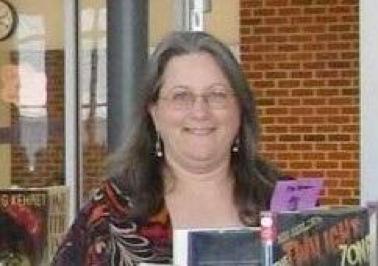
Congratulations, Beth O’Connell, aka our beloved Beth Ghostraven, for earning the ISTE Virtual Environments Network’s coveted Virtual Pioneer of the Year Award for ISTE2017 .

An interview by Rosie Vojtek (aka) Roxie Niero
The Virtual Worlds Best practices In Education (VWBPE) Thinkerer Award is the highest recognition given to an individual who has provided outstanding service to both the field of education and the virtual world at large.
According to the VWBPE announcement [https://vwbpe.org/vwbpe-news/vwbpe-announces-2017-thinkerer-award-recipient], “The Thinkerer Award is presented to an individual whose deeds and actions have shown a consistent selfless service towards the promotion of learning, community, educational practices, and who exemplifies the spirit of cooperative development within immersive environments.
Recipients of this award are not simply outstanding professionals in their field. Award recipients must characterize transformational leadership qualities to:
• envision and guide change;
• enhance the motivation, morale, and performance of both peers and pupils;
• promote best practices and continuous improvement; and
• inspire others through their words and actions.”
This year the award was presented to Cynthia Calongne (real-life) and Lyr Lobo (in Virtual Worlds). She “has over 20 year’s experience pioneering and conducting research in virtual worlds, virtual reality, emerging media, games, and computer science. Over this time she has mentored over 60 doctoral candidates throughout her tenure as a professor of computer science at Colorado Technical University. Previously she had 13 years experience as a software engineer.” You can read more about her on the VWBPE announcement page https:// vwbpe.org/vwbpe-news/vwbpe-announces-2017-thinkerer-award-recipient.
Cynthia/Lyr is probably one of the busiest people I know. Luckily, she was able to find time in her hectic schedule do this interview. I know you will be as amazed as I am with all she has accomplished. I can’t think of a more deserving person to receive the 2017 Thinkerer Award. Enjoy!

Roxie: Congratulations, Cynthia! I would like to begin by thanking you for taking the time to do this interview with me. You are an incredibly talented and busy person. It means a lot to me and to our readers to be able to get to learn more about you and the work you have been doing in the real world and virtual worlds. So, let’s begin by having you tell us about yourself – anything you would like the readers to know about you.
Cynthia: Lyr Lobo is my avatar name in the Metaverse, and I’m a professor, researcher, game designer, and author. From 2005-2017, I taught 52 university virtual world classes, hosted 217 keynotes and presentations, and published 30 papers, two book chapters, and two books.
Roxie: Amazing! What exciting projects are you working on now in virtual environments?
Cynthia: One of the benefits in virtual worlds is the ability to meet with researchers around the world and collaborate on game simulations. After an article I published in the EDUCAUSE Review (Calongne, 2008), Dr. Andy Stricker, a high school friend, called and invited me to join The Air University research team. That article led to numerous opportunities and where I am today. What is interesting is that I wrote three articles for journals that day and had only four hours

to devote to it. As I thought about this interview, I pondered how much we change over 20+ years working in virtual reality.
Many thanks to my family and wonderful research team for their support!
Today (2017), I conduct research with Project MOSES, the Infinite Metaverse Alliance (IMA), The Air University Metaverse, Virtual Harmony (VH), and offer support for the Nonprofit Commons and their sponsorship from Avacon. Our VH research group includes Barbara Truman, Andy Stricker, Toni Scribner, Brad Aldridge, and Fil Arenas. We spend a few hours each week working on research initiatives, simulations, and game designs. Between activities, we publish papers, speak at conferences, and host Global Learning Forum events.
Roxie: What exactly does the Infinite Metaverse Alliance (IMA) do?
Cynthia: IMA seeks to strengthen the use of open source virtual worlds for accessi-
bility, security, commerce with an eye toward sustainability, browser-based webworlds, education, the arts, and more.
Roxie: Tell us more about your work. What are some of your favorite projects?
Cynthia: I am a co-organizer for the OpenSimulator Community Conference, an event that presents the research and educational discoveries from 30+ speakers as well as the Opensim Core Developers, the Third Party Viewer developers, and examines the community’s needs. While the conference focuses on the OpenSimulator community, presentations on virtual reality technologies and other virtual worlds provide insights for the discussion of future virtual world requirements and usability needs.
In April 2017, I joined distinguished colleagues as a recipient of the Thinkerer award from the Virtual Worlds Best Practices in Education (VWBPE). Figure 1 features my reflection as I took a photo of the award, which depicts a person swirl-
ing around the world as she reaches for a star.
Our awareness of presence, identity and culture in these spaces fascinates me. Virtual worlds come alive through the intersection of people and content that responds to them.
I joined the CTU faculty in 1996 and am a Professor of Computer Science and teach in the Doctoral Studies program at Colorado Technical University (CTU). I am also an instructor with the Colorado Community Colleges Online (CCCOnline).
Prior to teaching, I worked as a software engineer and systems programmer, supporting Air Force Space Command. When the Space Shuttle crashed, I was as a database consultant for the U.S. Space Foundation during the teacher resource program. I worked at Webster University while completing a graduate degree and was a systems administrator for a UNIXbased system for an environmental political action committee on Capitol Hill.
Roxie: Do you have a favorite virtual world simulation or game design?
My research team designed a space simulation that made you feel like you were a science officer on board a spacecraft, heading to Mars. We won the $25,000 Grand Prize for the Mars Expedition Strategy Challenge in the Federal Virtual World Challenge. My research partners, Andy Stricker and Mike McCrocklin, were not going to submit their amazing design in the Federal Virtual World Challenge, but I felt such a strong emotional response from the experience and submitted the entry. At the time, there was no grand prize, and when we attended Defense GameTech, we only knew of 1st, 2nd and 3rd place prizes.
We were sitting at a table next to Will Wright, famous for The Sims, SimCity and Spore as well as Larry Johnson, CEO and visionary in virtual world’s education. They called all of the names, and I was amazed when they announced that the experience was transformational and in-
spired them to create a Grand Prize.
Roxie: WOW! You must have been so excited! Can you explain more about the simulation?
Cynthia: The simulation took 2-2.5 hours to complete, and began in a learning center. When you entered, a chatbot wearing a NASA blue flight suit and a white cowboy hat walked around the counter and greeted you, offering a tour of the center. He walked around it, describing the videos and exhibits. He interacted with guests, answered questions and pointed them to souvenirs in the exhibits. (Calongne, 2010, February 8). Some guests did not realize that he was a bot, as he liked to talk, move, and guide guests through the experience. In the center, guests could see videos and take my trivia game as a pre-test before and after the simulation.
Roxie: How fun!
Cynthia: Touching the launch button activated a five-minute countdown to launch. Boarding the rocket above the Learning Center, it would lift off and take you to a deep space explorer that rezzed (became visible to users) when the rocket drew near. The spaceship had a crew area, flight deck and two wings. The crew area featured four science workstations with videos and quizzes as well as a fifth station to summarize the experience.
Similar to a 3D game, certain visual experiences occurred when guests drew near and would fade after they departed, optimizing the performance of the simulation.
En route, the simulation rendered space phenomena and created the illusion of drawing nearer to Mars (as seen in Figure 2; Calongne, 2010). Upon completion of the activities, guests boarded a Mars Lander to visit one of two mining colonies on the planet. Our spacecraft was named the Huffman Prairie Red Lion Deep Space Explorer as a salute to early aviation and the Gilmore lion, a lion cub that flew with a pilot in the 1930s.
Pioneering in virtual world education is a bit like flying with a lion cub some days. It’s exciting, but can be intense!
Roxie: (Laughing) You are so right! What a great analogy. Why do you pioneer multidis-
ciplinary research in virtual reality and education?
Cynthia: After working for Space Command, I needed a career change and saw the potential in virtual reality. Inspired by television series and films, such as VR5, Johnny Mnemonic, Disclosure, and Wild Palms, I wanted to sort fiction from fact and investigate how to strengthen the user experience for personal computer (PC) users. Virtual reality spaces on a PC were uncommon and expensive in 1995, so I left defense contracting and enrolled in a Doctor of Computer Science program at CTU.
My goal was to strengthen how we use virtual reality. During my doctoral studies, I wrote numerous papers that explored research problems and the tactics other scholars used to investigate them.
Roxie: That must have been difficult to do in the mid-nineties!
Cynthia: My lab costs were $26,000 for the hardware and software, including a head-mounted display device and a dataglove for Windows 3.1.1 and later, Windows 95.To design and run the experiments, I used the Superscape VRT 4.0 software from the UK, which was powerful, but not unlike using Blender to create a mesh world.
Many describe the SL viewer by its steep learning curve. I found it simple to use, yet feature rich. It was like magic to create that first prim in SL. Previously, I created content using vector geometry, wireframes (connecting the dots), rendering (putting faces or sides on them), texturing, and setting the collision detection, lighting and shadows. To select a shape, click the ground and have it appear immediately was mind boggling.
Roxie: I can’t even begin to imagine…
Cynthia: Even today, the magic of this experience makes me tolerant of the struggles we face when testing the limits of virtual world technology.
My early experience differs from some educators. Instead of struggling with the viewer interface, my progress resembled PacMan, as I digested creativity concepts, learning techniques and the virtual world culture as fast as I could.
Roxie: It sounds like you really just gobbled them up! Truly amazing! So, how did you get started in Second Life?
Cynthia: I joined Second Life (SL) in December, 2005 when the New Media Consortium (NMC) held their educational gaming conference with Learning Times and invited the attendees to join them in SL. Progress was sluggish due to my literal nature. They put me on a region with signs that asked me to adjust the media and audio controls before leaving. Since the parcel media was disabled, I was at an impasse. Fortunately, the NMC held an inaugural celebration for their NMC Campus a few months later, and there, I met Namotur Pendragon, a scripter from the Electric Sheep Company, who inspired me to script my creations and give them life.
Roxie: It is amazing how you meet people in real life or virtual worlds that have a way of changing your life. What was Second Life like in 2005? It was definitely before my time, LOL. My Rez Day (the day Roxie was created) didn’t officially happen until January 29, 2009. So, I am always interested to hear what SL was like in the beginning years.
Cynthia: At the time, there were 230,000 residents and about 10,000 simultaneous users in world. Several SL educational groups offered free project classes to encourage residents to build new content. During the first five weeks, I completed 56 of the project design classes in Second Life.
Roxie: Amazing!
Cynthia: The fascination with learning never waned. During 11+ years, I completed over 700 one-hour design classes. I wanted to learn new techniques and to understand how people from diverse backgrounds teach and learn in a virtual world.
Roxie: And you continue to share what you have learned with all of us. How are people changing because of the work they are doing in the real world as well as avatars in virtual worlds? Is this a good thing or a bad thing, and why?
Cynthia: When I think of personal change and transformation, I think in terms of new practices and learning methods. Change is growth and growth is good. Even the struggle makes us stronger.
In October 2006, I met Peggy Sheehy at the NMC and MacArthur Series on Digital Media and Learning, simulcast as a blended reality event in Second Life. Many noted speakers and personalities participated, including Howard Rheingold, Barry Joseph from Global Kids, and Danah Boyd blogged the event.
At the event, Barry Joseph introduced the Global Kids’ human barometer activity. The audience stands and when asked a thought-provoking question, moves to the response that best reflects their stance on the subject.
Their signs reflected the Likert Scale categories (Strongly Agree-Don’t Know-Strongly Disagree) while mine first used the label Myth and Truth.
In my class discussions, I invited students to continue to move as we talk. When their opinions changed, they moved to the location that reflected their present position. Standing on the line is similar to being neutral or unsure. Shy members of the group seemed comfortable taking a stance, and it encouraged some lively debates.
Roxie: What a great idea!
Cynthia: I use these strategies in my virtual world classes and also at events outside the virtual world, especially with large groups. At a live event, the human barometer is a fast way to discover how far the attendees are in a particular process, such as the dissertation journey, which helps me to direct my comments to their needs.
Roxie: I can even imagine elementary and middle school teachers using this in minecraft with students. Great idea! What other strategies have you or others used successfully in virtual spaces?
Cynthia: Peggy used a barn raising metaphor to inspire the community to help her raise the Ramapo virtual schoolhouse [http://www.vwer.org/2009/04/07/april7-2009-the-ramapo-island-and-teen-gridspecial-guest-maggie-marat/]. Famous designers contributed their best content to her three regions before Linden Lab moved them to the Teen Grid. I wondered how it would work, and asked Peggy if she was interested in robots. It was during the Big Robot on Campus project, sponsored by
Wired Magazine and Lego Mindstorms NXT, where I designed Slonny Number 5 as a tribute to the movie Short Circuit.
Roxie: I love robots. Tell me more about what your robots did.
Cynthia: My robots distributed course content, patrolled an area, acted as digital assistants, or danced. I volunteered to send my avatar Ryl Redgrave with the regions and to help mentor her 400 8th grade students from Suffern Middle School in New York. It required completing an investigation to work with children. While we were on the Teen grid, the virtual world school was secure and comprised of three regions the first year and six regions from 20082009. The popularity of the condos and student-run businesses led to increased demand for more space and additional learning simulations.
I learned so much from the 13-year-old students. They challenged me to help them to discover new design features and scripts, and in turn, I showed them how to tailor them, and then they completed the task. During these lessons, I discovered my preference for Cognitive Apprenticeship.
Roxie: What is cognitive apprenticeship?
cepts. This learning method benefits from instructors observing the work in progress and offering guidance after a suitable period of struggle and reflection. Students gain skills and develop their mastery through practice and by observation. We work cooperatively, and students learn how to collaborate on individual and group designs in class.
Roxie: What was your favorite project?
Cynthia: Several come to mind. I loved designing my robots, working on the Mars Expedition, conducting shared leadership research on the Hostage Rescue Game, and working with the teens at Ramapo. But if I had to think of an early creation, it would be the mosque, which was a collaborative design that took 12 days to investigate, create the custom textures, and architect with a talented family member, Dornn Darrow.
From the mosque came the concept for the educator’s gazebo, which reminds me of the aesthetical beauty, lean design principles (of the time), and whimsy of the poses. It resembles the turrets from the Lunata Masjid that we designed for the Institute for Compassion and Peace. The mosque resided next to Herman Bergson’s Notre Dame in Second Life. We modeled the architectural

Cynthia: Employing the historic roles of apprentice, journeyman and master, my virtual world’s classes create class projects using design thinking, which we discussed in an MIT journal paper and a book chapter on how to strengthen teamwork with design thinking (Stricker et al. 2011; Stricker & Calongne, 2015).
Students and instructors work together with the instructor to demonstrate the con-
design as a center for culture and learning, and it resembles the Jama Mosque in Delhi. Understanding how to orient the building in a virtual world in accordance with the cultural requirements required research and reflection.
Roxie: Can you show us an example of what you are talking about?
Cynthia: The Second Life photo depicts our
build partway through the design, taken prior to Windlight environment settings. We were limited to a 30x50 footprint and if memory serves me, ~250 primitive shapes to complete the design.
teammates who inspire me. We won the $25,000 Grand Prize for our simulation The Mars Expedition Strategy Challenge.
Later, we added textures to create shadows and depth as well as fountains and a veiled area.
For a comparison, look at the image of the Jama mosque in Delhi, a model for our virtual world design.
Roxie: Name 3 adjectives that best describe your work in virtual environments and explain why.
Cynthia: First is Collaboration. Collaboration and teamwork are strengths in virtual worlds. I am fortunate to have great
References:
Second would be Creative. Virtual worlds are playgrounds for the mind. In them, you can create fantastic or realistic content, and with a few basic skills, can create content quickly.
Cynthia: Virtual worlds focus on the connections between people and content. Without people, the world is lifeless, and without content, it is a blank canvas, yet without color or movement.

Roxie: So true! And you definitely have brought color and life to fill many blank Between 2006-2007, Ann Enigma (Hilary Mason) and her computer science students built Virtual Morocco and took a field trip to visit the country. Hilary designed the Autoscript tool that automatically generates scripts, empowering virtual world users and instructors with the ability to construct, use and explain the design of scripts (Mason, 2007). We spoke on a NMC Summer Conference panel with Alan Levin and Nick Noakes. During the conference, Hilary invited me to evaluate the Autoscript tool. Memories like these remind me of how we are all connected.
And last, Quirky. I like lean designs that are playful, humorous or take us to far-away places. Of late, I study their effect on the simulator to understand how to strengthen the user experience and reduce lag.
Roxie: All three of these are extremely important and definitely personify your work in virtual environments. Is there anything else you would like to say to our readers?
canvas throughout the virtual world’s communities. Thank you so much for taking time to do this interview and sharing so much of your life and your work with our readers. Once again, CONGRATULATIONS! Keep up the GREAT work!
Cynthia: Thank you for this opportunity to share with our virtual education community!
Bikashrd Jama Masjid - In the noon [Image]. CC BY-SA 4.0. Retrieved from https://commons.wikimedia.org/w/index.php?curid=51210343
Calongne, C. (2008). Educational frontiers: Learning in a virtual world, EDUCAUSE Review, 43(5), pp. 36-48. Retrieved from http://net.educause.edu/ir/library/pdf/ERM0852.pdf
Calongne, C. (2010, February 8). Mars expedition strategy challenge [Blog]. Retrieved from http://marsexpeditionstrategy.blogspot.com/
Calongne, C. (2010). The Mars Expedition: A Virtual Context in Storytelling. The New Media Consortium Symposium on New Media and Learning, March 24-25, 2010. Retrieved from http://www.slideshare.net/lyrlobo/mars-expedition-game-tech-2010
Links:
Mason, H. (2007). Script me! Retrieved from http://3greeneggs.com/autoscript/
Pellerin, C. (2011, May 9). Air Force eyes new learning systems in ‘Second Life,’ [Blog]. U.S. Department of Defense. Retrieved from http://archive.defense.gov/news/newsarticle.aspx?id=63873
Stricker, A., Holm, J., Calongne, C., & McCrocklin, M. (2011). Collaborative prototyping of learning innovations across loosely coupled educational communities. MIT International Journal of Learning and Media, 3:1. doi: 10.1162/ IJLM_a_00064
Stricker, A., & Calongne, C. (2015). Remapping mental models of collaboration using immersive 3D design thinking studios. In A. Kok and Hyunkyung Lee (Eds.), Cultural, behavioral, and social considerations in electronic collaboration, IGI Global.
Selected work: http://bit.ly/ccalongne
Presentations: https://www.slideshare.net/lyrlobo/
Emerging media in virtual worlds blog: http://ctusoftware.blogspot.com/
IMA http://infinitemetaverse.com/about-us/our-mission
WiVR: http://www.wivr.net/about-us/expert-directory/
NPSL: Nonprofits in Second Life: http://nonprofitcommons.org/
MacArthur Digital Media and Learning 2006: https://depts.washington.edu/ccce/civiceducation/mdlp.html
NMC 2007: https://www.slideshare.net/nmc/nmc-campus-in-second-life-what-a-year
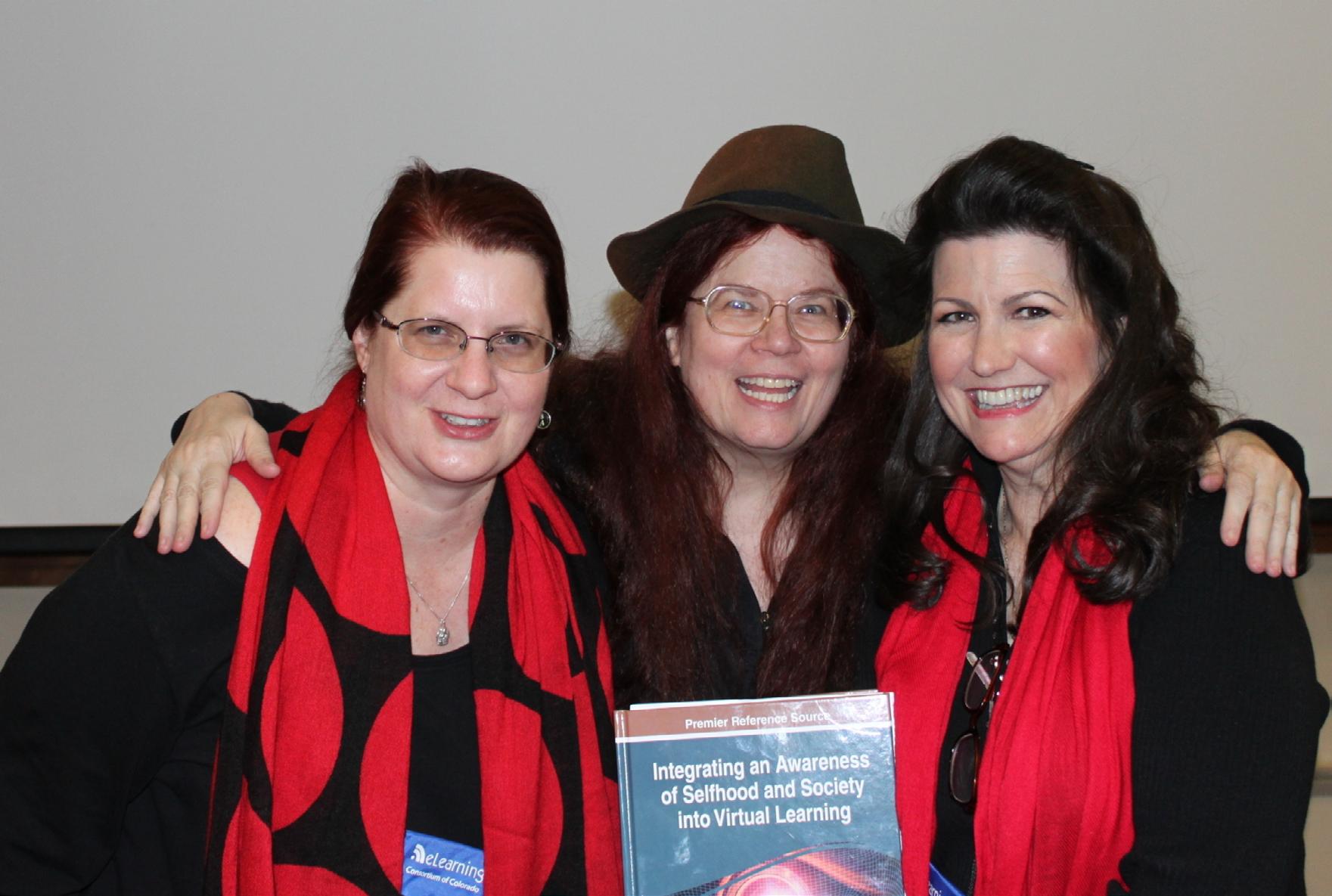
By Lyr Lobo, aka Cynthia Calongne
Note from the editor: I asked Lyr Lobo to tell us about herself – who she is, what she does, and her journey into virtual worlds. Here is what she wrote.
I’m Lyr Lobo, aka Cynthia Calongne, a professor, gamer, researcher, writer, mother, and virtual world designer.
To summarize my work in virtual worlds, I am like the flower that blooms through adversity. It took 20 life changing moments to position me for success in virtual worlds.
To reach this stage in my life, it took 1) my adoption as a baby, and then 2) the loss of my Father when a hurricane destroying our home, 3) the support of my wonderful extended family, followed by the need for quiet, and then 4) a few years living in one room with a hot plate, and a desire for more space 5) climbing out of our car with my Grandmother as it filled with water during a flash flood. The car sailed away and sunk, never to be seen again.
It took 6) two bus accidents, and 7) a private investigator to find me, 8) meeting my Dad at age 23, 9) life in DC, 10) working on Capitol Hill for the environment, and 11) working as a consultant on the Teacher Resource program at the U.S. Space Foundation when the Challenger Space Shuttle crashed. The Challenger crash stunned everyone.

I lost a husband, but gained a job working for Air Force Space Command. I felt bad when 12) I ran over my ex-husband’s Apple Macintosh 512K Enhanced computer while working with Air Force Space Command. Luckily, it still worked, but had tire marks running up the side of the case and a sad looking keyboard and mouse. I figured that I’d voided the warranty, so I opened the case to see the names of the Apple team, embossed in the metal.
The news 15) that I had a month to live made me move faster, followed by 16) the race to have a son, who failed to thrive. He was sent home to die, but after two years of struggle, he stayed and we both lived.
When the job for Space Command ended, rather than destroy the mainframe, 13) I coordinated a green engineering project to cleanse and re-purpose it for classes at the Air Force Training Command, from which 14) I left to design and test a virtual reality environment for usability during my doctoral research.
My journey into my career in virtual world education 17) led me through marriages to three visionary men who moved me into position like a Queen on a chessboard, 18) to my friends in a virtual world who sustained my spirit, and my fellow authors and friends who strengthened my stories and encouraged me, 19) my partner who inspires me with his virtual world designs and reminds me about self-care, and 20) my dear colleagues, friends, fellow gamers, research partners, and the pioneers from over 80 virtual world community groups who inspire me. They remind me to live well, knowing that we make it all possible together.
The fourth annual Second Life MOOC (SLMOOC17) will take place from June 1st through 30th, 2017. Organized this year by Dr. Doris Molero (SL: Pionia Destiny), Dr. Nellie Deutsch (SL: Nellie Homewood), and Dr. Nan Zingrone (SL: Maggie Larimore), the theme of the current MOOC is Peace Through Learning. The MOOC content will focus on connecting online for collaborative learning and teaching around the world through virtual worlds like Second Life, Minecraft, Digiworldz, or OpenSim. The live presentations will include the speakers’ reflective process on teaching and learning in fully online and blended learning formats.
SLMOOC17 is for educators, schools, and public and private businesses that wish to provide training in virtual worlds. Weekly badges and a final certificate of completion will be available for free. To join the course on Moodle and have access to colleagues, discussion forums, videos of all the virtual world and webinar presentations, assignments for the badges, and reflections for the certificate, go to Moodle4Teachers, create a free account, and browse the Moodle-based part of the course.

Visit the SLMOOC17 Syllabus on Google for more information on the course, the presenters who have already signed up, and the various areas in which the course materials will be housed, and the activities will occur. Check out the SLMOOC Playlist on YouTube for instructions on getting an account and finding the SLMOOC Headquarters in Second Life. And be sure to check out the Course Schedule and Presenter Biographies as well. And of course, there’s the SLMOOC Facebook group as well!
And just to tantalize you a little bit: Among the folks who have signed up to speak so far we have Beth O’Connell (Avatar Appearance in Virtual Worlds), John Herring (SL Case Files #1: Time Quest), Selby Evans (Web Worlds: Miniature Virtual Worlds), Dr. Evelyn McElhinny (The Importance of 3D Virtual Worlds to People with Long Term Health Conditions), Jarosław Maciejewski (Programming the Bot Yourself), Andy Wheelock and Scott Merrick (Weekly Events for Educators and Everyone: Think ISTE VEN), Dr. Valerie Hill (Digital Citizenship: Virtual World Information Literacy), Martha Eugenia Lino and Dr. James Abraham (Virtual Worlds as a Tool for Spanish Teaching), Niela Miller (Visions of Self: Symbolic Modeling in Second Life), C. M. “Camie” Elias (Beyond Second Life: Creating and Saving in Virtual Worlds Offline), Renee Emiko Brock (Superhero Keys
to Success: Unlocking Potential through Story Telling), Valerie Hill and Marie Vans (Metaverse Libraries: Connecting Communities as Resources), Elizabeth Hernandez (La Historia de Aprender de Tod@s), Lynne Berrett (New Frontiers in Online Brain Training), and Laura Jeffcoat, Ana Gema Gallego Garcia and Shelwyn Corrigan, not to mention a live session from the ISTE conference with Scott Merrick and more.

Note to folks who might want to share their work in virtual worlds or other insights into teaching/learning online: We still have a few available spots on the schedule. You’re welcome to email Nan Zingrone (nancy@theazire. org) or IM Maggie Larimore to get editing permission on the presentation schedule. We’d love to have you!!
Watch recordings at:
https://www.youtube.com/playlist?list=PL8JUcjyABKxkl1QRALo5jHYpMCCf7Kh_a https://www.facebook.com/groups/slmooc/photos/

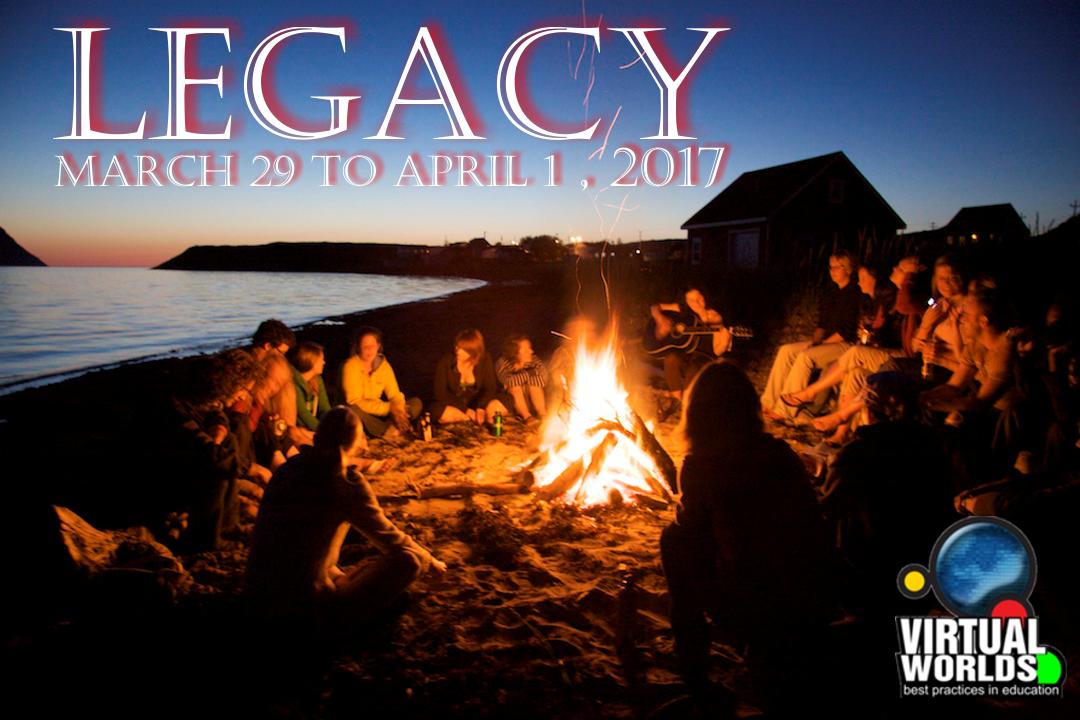
Once again, the Virtual World’s Best Practices in Education Conference (VWBPE17) was a huge success. Although there were pre-and post conference activities, the virtual conference was officially held March 29 – April 1, 2017. During the VWBPE 2017 Conference there were 4,900 visits, from 730 avatars, spending an average of 44 minutes. The entire budget for the conference was $2,500. And, the people/avatars who attended the conference did so from all around the world. Indeed, VWBPE has left a legacy this year in virtual worlds.
After the conference, I had the opportunity to interview the Executive Committee for VWBPE. Although there are numerous volunteers and committee chairs, there are only three members on the Executive Committee: Kevin Feenan, aka Phelan Corrimal; Leticia De Leon, aka Letty Luckstone; and Lorraine Mockford, aka LoriVonne Lustre. Together they answered the following interview questions.
Roxie: What is The Virtual World’s Best Practices Conference? When and how did VWBPE get started? What is the purpose of the conference? What do you hope participants will take with them after attending the conference?
Executive Committee: VWBPE started out as a collaborative community event in 2007 that showcased some of the best of what people in Second Life were doing with the platform. It brought together people from all disciplines. The original conference started as a 24-hour event covering all time zones. It has subsequently grown into a
By Roxie Niero
4-day event with activities 2 weeks before and after the main conference. This allows for people to experience the immersiveness of some of the presentations without the time pressure.
After attending the conference, it is our hope that people come away energized through experiencing what others are doing with virtual worlds and hopefully raising the bar for next year.
Roxie: Amazing, but true, the tenth anniversary conference was March 29 – April 1, 2017. Where was the conference held? What were some of the highlights from this year’s conference?
Executive Committee: The tenth anniversary conference took place in Second Life, with all events occurring in VWBPE regions. The most memorable moments have been captured on our Flickr page at this link: https://www. flickr.com/groups/vwbpe/. We have an active community that contributes pictures from every aspect of the program, from academic to social events. There are pictures from 2009 to the present.
Roxie: You have some great pictures! I would encourage readers to delve into the archives and check them out. Thank you for sharing the link. Would you describe the first VWBPE conference? What was it like? How many people attended? What worked/didn’t work?
Executive Committee: The first conference was very different from how it is now. All the ‘land parcel’ spaces were donated by the community and people had to make their way from location to location. It was, in some respects, more of a ‘driving tour’ with a couple of locations acting as the main venue.
The first year there were approximately 700 people in attendance. Since then the conference has grown. The largest attendance we have had has been 3500 unique avatars. This past conference was almost 800. So, it depends on the year.
Roxie: Yes, I have noticed that, too. The time of the year makes a difference.
Executive Committee: We don’t really see the conference in terms of what does or doesn’t work as if it is a static thing. The technology changes from year to year. Where augmented and virtual reality changes from year to year. We have made improvements. We have tried different things over the years. Some we have kept and others have dropped by the wayside based on the needs of the people attending.
If we had to look to one thing that has worked well, though, it would have to be everyone’s willingness to experiment. You have to be prepared to try new things. With this conference people, can always look forward to something new each year. That has worked out well for everyone.
a very strong demographic that we feel any conference would be excited about in terms of returning conference attendees.

Roxie: I so agree. Plus, that is what makes each VWBPE conference new and exciting! Each year seems to get a little bit more dynamic and complex based on the technological advances available in virtual worlds. So, over the years, how has VWBPE grown? What is different? What has stayed the same?
Executive Committee: VWBPE has definitely had more of an educational focus over the past 10 years. When we started, there was much more interconnectedness between the various communities. Education was the

glue that allowed a lot of these communities to remain in touch. Over the years, however, there has been much greater segmentation. Notwithstanding, there is still
Roxie: I couldn’t agree more. My favorite part is that you don’t have to travel or spend big bucks to stay in a hotel to be able to listen to the experts and network with people from around the world. Dealing with an international 24hour daily ebb and flow of participants, however, must bring about its own challenges. That being said, what are some of the challenges of putting on a virtual conference like VWBPE?
Executive Committee: Anything that involves 1000+ people is an exercise in herding cats. We have some incredible cat herders involved on the committee. Getting people to the right place, at the right time, for the right reasons is always a challenge. Fortunately, our cat wranglers are first rate at what they do.
Roxie: What are some of the benefits of the conference?
Executive Committee: One of the biggest benefits of the conference is being able to network and collaborate with people all over the world without having to spend money for travel.
Roxie: Absolutely!
Executive Committee: Another big benefit is the variety of projects and research that is presented, which indicates numerous activities from educators, researchers, and communities of practice. Very few conferences offer the possibility for educators to mingle with groups that may potentially support what they do inworld. These individuals may include advocacy groups, content creators, scripters, and others who offer support services for educators.
Roxie: So, the question most organizations, and especially participants would be interested in knowing is… How do you do it? VWBPE is a FREE conference. How is this possible?
Executive Committee: The conference runs on a total budget of less than $10,000. All of it goes into program

elements. There are numerous bells and whistles we can add to the conference based on the available budget. We are fortunate in that there are some patrons of education that support what we do and help provide the needed funds to look after the minimal costs we do have. As long as we have the sponsorship and community support, this conference will remain free for people to attend.
Roxie: Let’s hope it continues! It takes a lot of people to successfully run any conference. How many people are behind the scenes? What are their different jobs?
Executive Committee: It would be a very long list to detail all the different jobs we have at the conference. There are about 40 or so different things that require help from people. Broadly speaking, we have tasks that involve Programs, Social, Mentoring, Building, Marketing, Web Design, Technical, Finance, Legal. This list goes on. For each conference, we normally recognize contributions by 60 to 80 volunteers that make the conference possible, not including the presenters themselves.
Roxie: Since the conference is entirely virtual, what are some of the technical challenges the conference faces? How have you used technology to your advantage? How have you overcome these challenges?
Executive Committee: One of the largest challenges in a virtual conference relates to a generic problem with distance learning and the use of augmented and virtual reality as a whole. That is the issue of digital literacy. Getting people into the conference, and then making sure they have all the tech required for them to be connected and engaged within the virtual space, is our largest challenge.
Unlike a brick and mortar conference, it’s not a question of having a common set-up for all participants, most of whom just need to show up. It’s a question of helping to manage the hundreds of different computer set-ups and the different ways in which people configure their home
or office computers. What works for one person may not work for someone else and, about 2/3rd of the time the issues are beyond our control to manage.
Roxie: Absolutely. It must be very challenging, as each person’s computer/situation is different.
Executive Committee: Yes, things like voice set-ups, firewalls, network speed, latency, operating systems, hardware, video cards, and drivers are unique to each participant.
Roxie: What are three of your most memorable conference moments?
Executive Committee: First, introducing people to a new buildout for the first time. We have had 6 build-outs over the past 10 years and it’s always great to hear the comments about how each one of them compliment the program we have planned;
Second, The Thinkerer Award. This is the 4th year we have given out this award. This year we had some really good candidates submitted. The strength of the submissions and the quality of the people being recommended by their peer group shows that this award is very impactful, not just to the people that have received the award, but to the people nominating those individuals;

Roxie: I so agree. Readers can learn more about the VWBPE 2017 Thinkerer Award winner, Cynthia Calongne, aka Lyr Lobo, in the interview article I did with her in this issue of VEJ. And your third memorable conference moment is?
Executive Committee: The gratitude of the people attending. Every year when we host this event, we hear from hundreds of people that have been looking forward to the conference: the networking, the program lectures and workshops, the social activities. You can hear it in their voices, and the way they describe their experience here
that the conference is meaningful, relevant, and engaging.
Roxie: OK, every conference has them and so I must ask; What are some of your most embarrassing – or “OMG, I can’t believe this happened,” moments?
Executive Committee: There are several. In 2015, our social director got kicked out of the awards ceremony by an over eager security person that was new to the conference. Took us a bit to fix that but it’s on youtube for those that want a peek.

Roxie: Yes, I would have to say that was one of my “OMG” moments as well! [Note, for readers who do not know what we are talking about, it was me. UGGH!] I have served as VWBPE Social Chair for the past several years. Actually, good news for me, I think it got edited out – LOL. But, I will never forget how I kept trying to make it back to the stage and kept getting booted out of the arena. Glad we can laugh about it now! [Smiles] For anyone who is interested, you can watch the closing ceremony for VWBPE15 after I regained composure [Laughing].
Executive Committee: We also get our inevitable share of people that like to show off their monstrous sized avatars. One year we had a dinosaur that took up about an of a region.
Roxie: WOW!
Executive Committee: In 2013, after months of careful testing we thought we were good to go and then crashed both the regions and our website on the first day of the conference. We discovered that stress testing BEFORE the conference is a good idea.
Roxie: Yes, I remember that. I also remember the year that social crashed the sim! [See VEJ issue June 2012, page 53.] To date, that was the most participants ever at a social ac-
tivity, I think – and we were so excited. We missed part of the concert… but many people joined us later for lots of fun, including the “Thriller dance” [ a script that played the “Thriller” song and animated your avatar.] I do believe, even though we crashed, a bunch of us went well into the night.
Roxie: What have you learned from 10 years of serving as the Executive Director/Committee of VWBPE? What do you know now, that you wished you would have known 10 years ago?
Executive Committee: It’s hard to look back and say, “I wish I knew now what I knew then”, as if the conference was a destination. It’s not. It’s a journey. The conference gets better as a result of not knowing what the future has in store for us. Having foreknowledge of what is to come doesn’t make you good, just lucky. You lose out on opportunities that would not have happened if you didn’t make mistakes from time to time. Failure can be life’s way of saying “what if you see the problem from this angle?”. You need to welcome the opportunities to take make mistakes from time to time.
Roxie: Agreed. If other people are thinking about hosting a conference or even meetings/classes in virtual spaces/ worlds, what advice would you give them?
Executive Committee: Treat everyone with respect and value all their contributions. Running a conference can be stressful, and you absolutely have to try to do your best to be respectful of people’s times, their perspectives, what they are prepared to give, and how you can support them in their goals and pursuits. It is a tall order, and we don’t always get it right. But when we do, the results can be magical.
Roxie: I like that. . . Magical. So, what are your plans for VWBPE 2018? What magical ideas are percolating?

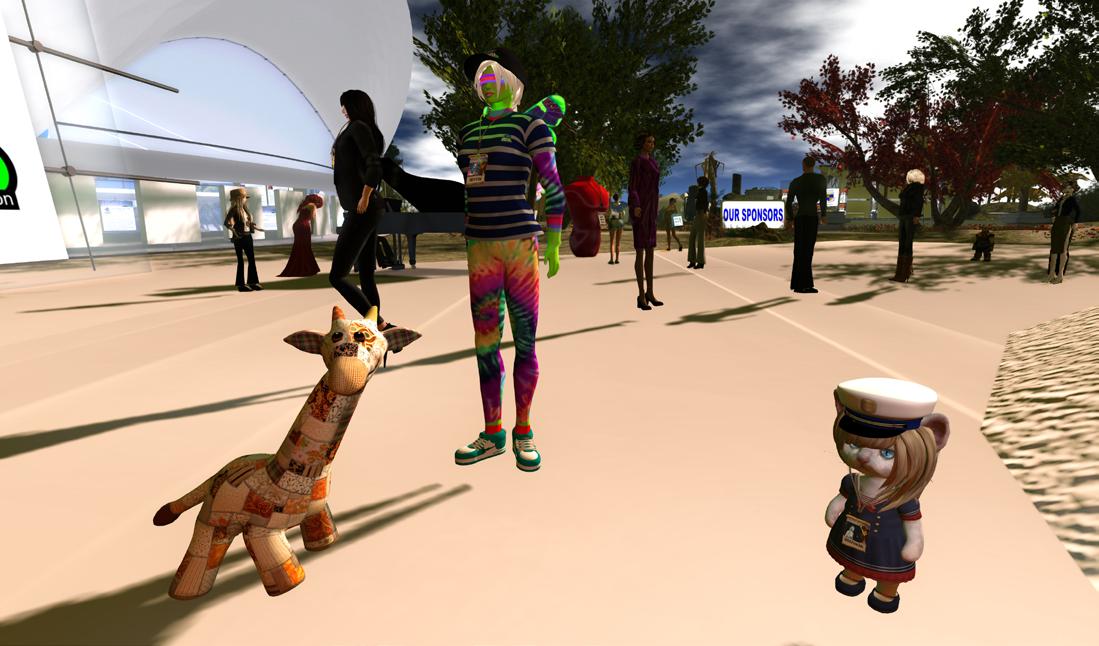
Executive Committee: We haven’t published anything at this time beyond the theme and the conference dates. We are exploring a Virtual Science Fair concept which is quite exciting. More information about this will be available later this spring. Specific conference information will be available in September.
Roxie: If people want to learn more about VWBPE and/or present, volunteer or make plans to attend next year, where can they go to get more information?
Executive Committee: All official information on the conference goes through our website and social media channels. This is our website: https://vwbpe.org/
Roxie: Thank you so much for taking the time to talk about
the VWBPE Conferences with me. VWBPE is a great opportunity for educators to network, learn from experts in the field, have fun interacting socially with others (hopefully trying new things they might not have done before in virtual worlds), and most of all getting to meet new people from around the world with a common interest – BEST PRACTICES IN EDUCATION. Thanks again to all three of you for taking the time to talk with me. We all look forward to VWBPE 2018 – VRevolutions, March 15-17, 2018!
[Editor’s note: You can read about the academic portion of the VWBPE 2017 Conference in the Journal of Virtual Studies, Vol. 8, No. 2 ; view VWBPE 2017 recorded presentations; and, view recorded sessions from previous years in the achieved playlist at https://www.youtube. com/user/VWBPE/playlists .]
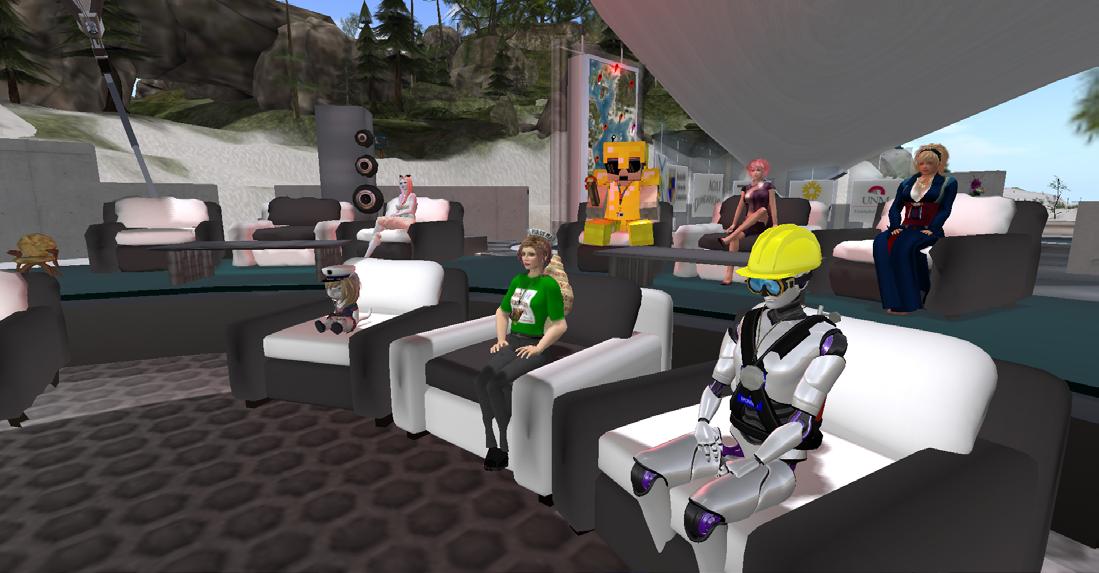


Hot off the presses is a special edition of the Journal of Virtual Studies, Rockcliffe’s flagship journal. Volume 8, Number 2 packs in four days of the conference’s academic program.
You will find keynotes, presentations, papers, immersive experiences, and more! Additionally, all sessions that were streamed or recorded now contain YouTube links, so if you missed a session, you may be able to view it on VWBPE’s YouTube channel.
Access the journal special edition online: JoVS Vol 8 No 2
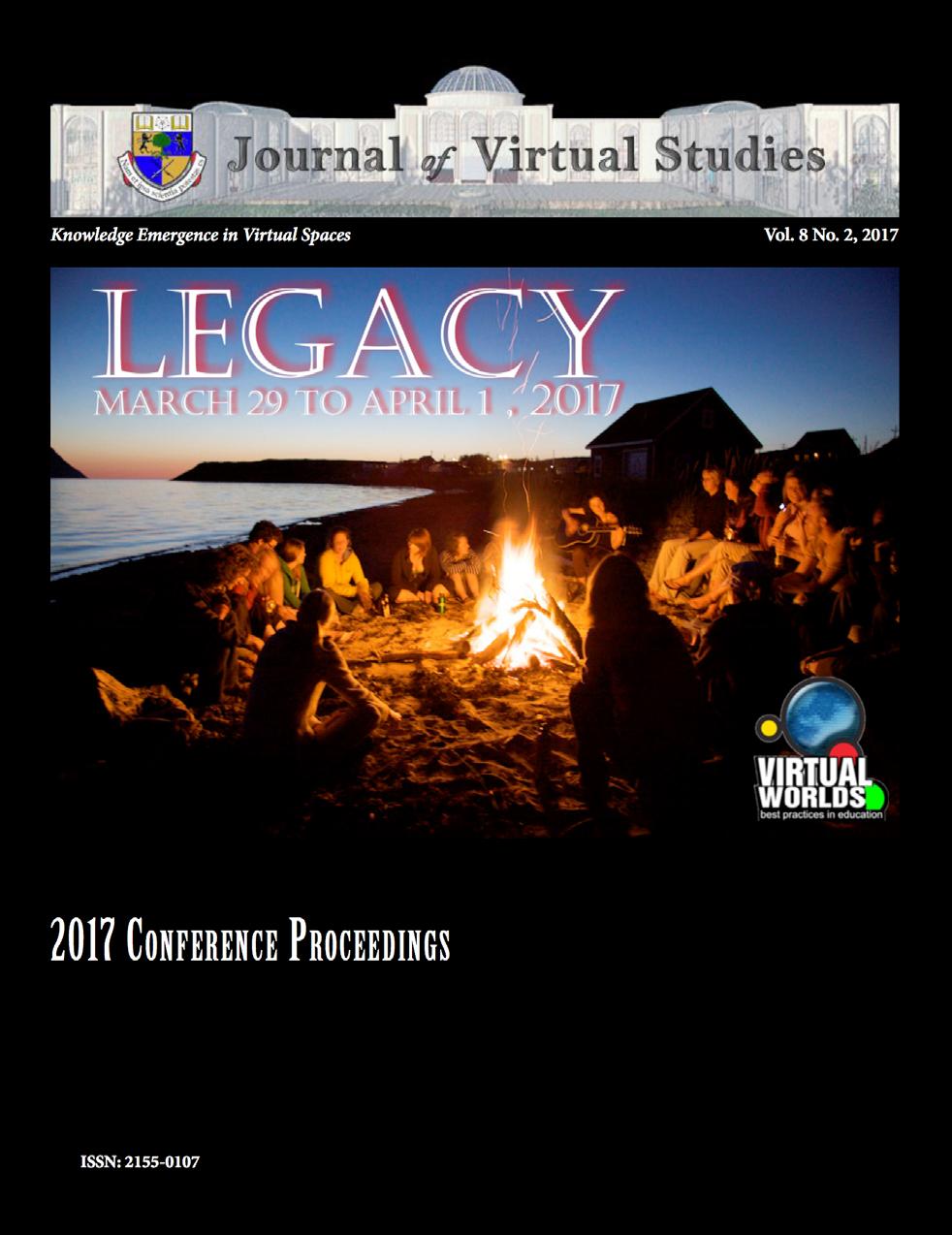

By MadKitty Aabye
Thousands of rock fans have probably fantasized about being Eric Clapton and I’m sure some of those daydreams included his collaboration with George Harrison on “While My Guitar Gently Weeps.”
However, it would shock me if the rock legend sported a fish’s tail in such fantasies. Even if the idea occurred to extensively imaginative fans, I have yet to hear of guitars that can be played underwater, barring the use of a yellow (or any other color) submarine.
I lived this unlikely dream in Second Life, thanks to my participation in the tribute band, Lightning Productions. During a Virtual Worlds Best Practices in Education Conference 2017 (VWBPE 17) event for which we were hired, our leader, Coz Okelly, assigned me the role of Eric Clapton in a Merfolk staging of a Beatles concert set underwater in their “Octopus’s Garden.”


Diving into my extensive inventory, I retrieved a pre-mesh era merman tail, which disappointed me, as it looked like scaly pants on which one leg was pegged and the other was bell-bottomed. I donned a merman animation override which made me float, spreading the bell-bottom across both legs. It looked passable but I decided I’d better test it with my guitar animations to see if the look remained.
Unfortunately, the guitar and merman animations interfered with each other, forcing me to choose between believable playing motions and not appearing as a human with bad taste and one hippie ankle.
I checked Second Life’s Marketplace for an inexpensive merman body, wore it, and thought to myself “I feel FIN with this.” The tail folded beneath me slightly, a problem my colleague Zonker (John Lennon) overcame by raising his hover height so he floated.
On the night of the show, I joined the Fab Four on stage, playing rhythm guitar in the background, shirtless in contrast to my colleagues, who looked smart in the Sergeant Pepper’s jackets above their tails.
We played many Beatles favorites as our Mermaid dancers (Cherry, Luce and Violete) swam among the audience. I
spent my big number at the front of the stage, then returned to the background for the rest of the show.
The focus on Zonker, MTrap (Paul McCartney), Chagen (Ringo Starr) and Nella (George Harrison) made it easy for me to take photographs throughout the concert.


I joined the conference attendees in dancing at the site after the show, morphing back to my “real” avatar during the festivities. The creative setting was enjoyable and everyone—band and audience alike—seemed to have a good time despite some costume issues that were a pain in the dorsal fin.


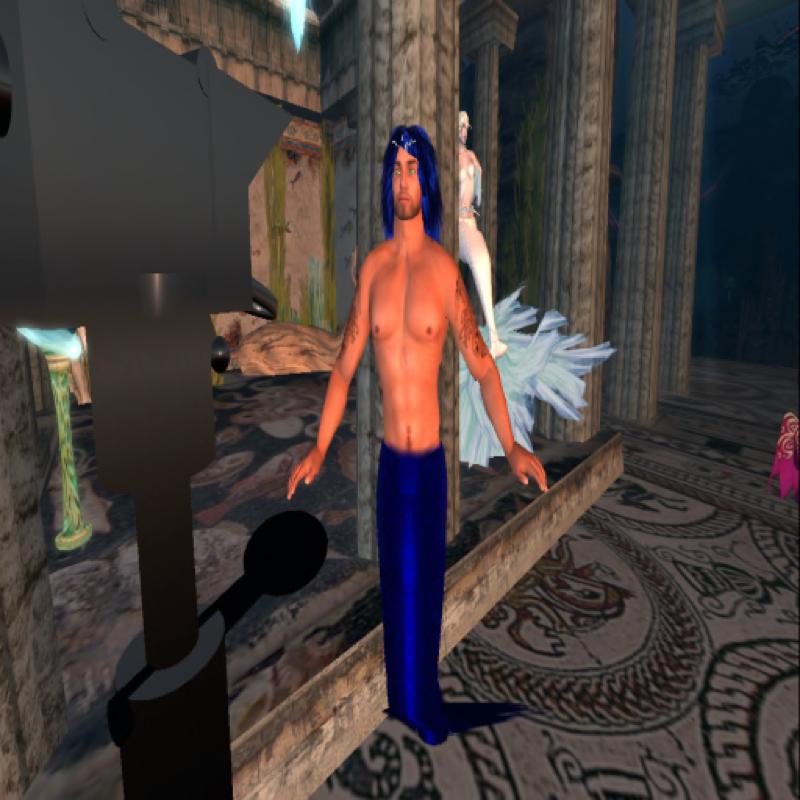
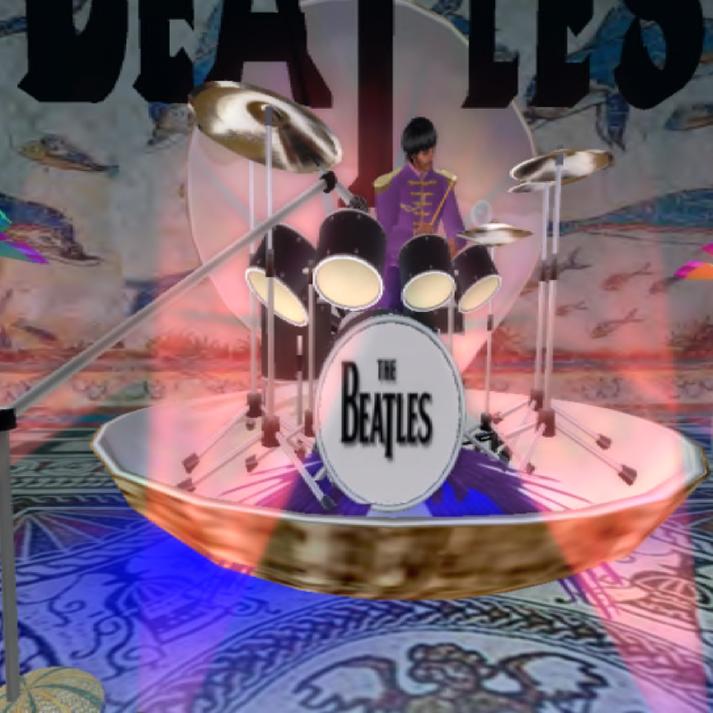
Torgon’s Fun Park

Saturday June 24
Games & Sims Table
What Teachers Could Learn from Pokemon Go - Mixed Reality, Pervasive Games and Geolocation
2 pm - 6 pm
HBGCC Stars Ballroom 4
RSVP on Eventbrite
Sunday June 25
ISTE Communities Network
3 pm - 5 pm
Games & Sims Network Table
HBGCC Tower View Lobby
Come by and chat!
Especially if you have a game or project you’d like to do at the ISTE Game Nite on Monday.
Monday June 26
River Walk Photo Quest with the Mobile Learning Network
8:30 am – 10:30 am
HBGCC Main Lobby Kiosk
RSVP or join MLN that morning
Follow us that morning using the hashtags #ISTEMLN and #PhotoQuest
ISTE Game Nite/LAN Party
5:30 pm – 7:30 pm
HBGCC Stars Ballroom 4
RSVP on Eventbrite
If you brought a game to San Antonio, bring it here!
Tuesday June 27
AR & VR Playground: Escape the Ordinary
2 pm – 5:30 pm
HBGCC Park View Lobby
Tables:
Space Virtual World - David Fliesen
DigIt! Games - Jessica Mlyniec and Chris Magnuson
Bloxels, Maker Empire - Kim Martin, Ben Gallagher and Ann Ward
Gamify Literacy Book - Michele Haiken
Pokemon Go and Google Maps - Adam Goodman and Cari Orts
360 Video VR Immersion - Richard Tran, Robert Nakama, and Mark Yap
VR and AR - Len Scrogan and Jamie Connally
Classcraft - Devin Young and Stephanie Carmichael
Escape Rooms - ISTE Games & Sims
Presentations:
Play Student Created 3D Games from AgentCubes Online - Ryan Rasar
Escape Rooms - ISTE Games & Sims
Space Virtual World - David Fliesen
Bloxels, Maker Empire - Kim Martin, Ben Gallagher and Ann Ward
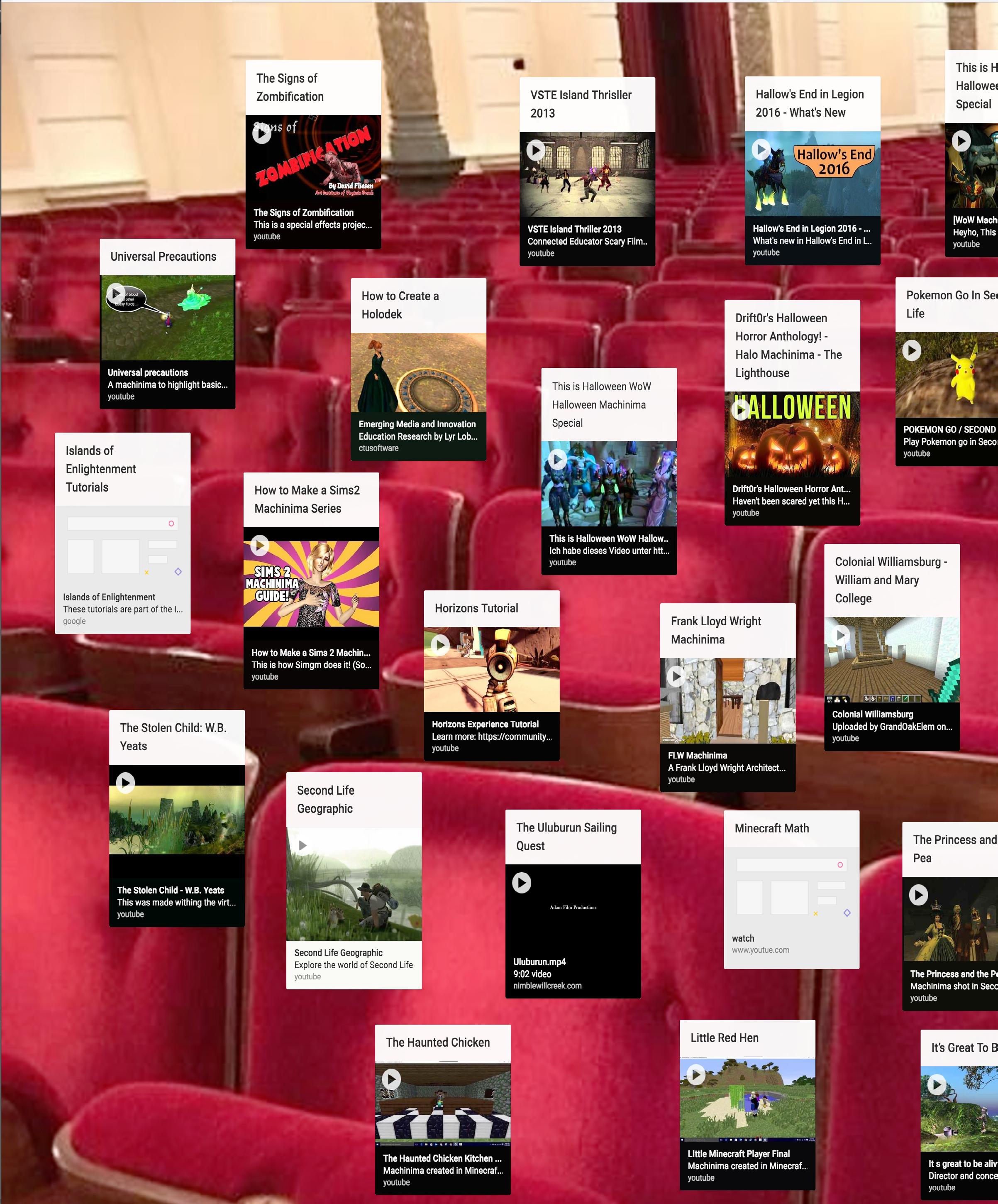

EduMachinima
5:45 pm – 7:30 pm
HBGCC 301A
Machinima List Padlet
RSVP on Eventbrite
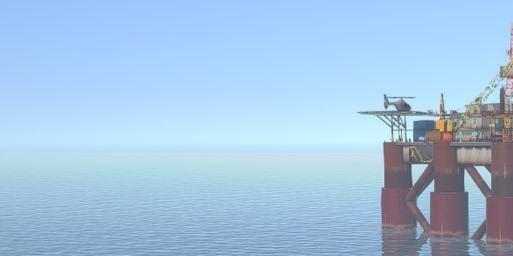
The Oil & Gas Institute in the School of Engineering at Robert Gordon University (RGU) in Aberdeen, Scotland has made significant investment in developing methods to ensure its graduates are “industry-ready”. As visits to oil rigs are not often possible or practical for students it was decided to develop a virtual space for students to familiarise themselves with aspects of the offshore environment in a virtual environment. Such simulation tools give students immersive experiences that can increase their desirability to employers.

• Development of semi-submersible rig in 3D Modeller
• Deployment in OpenSimulator (OpenSim)
• Set in ocean environment with sea life
• Moving parts and detailed machinery

• Realistic, loud, 3D sound
• Visitors click on objects for information and linked videos
• Hard hat, ear defenders and boiler suit dispensers for avatars
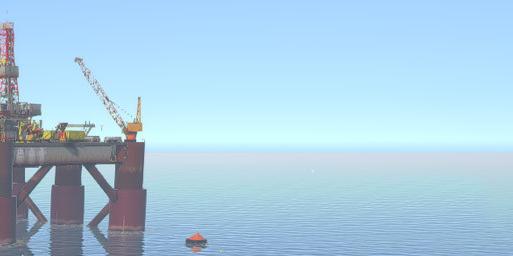


Seabed Equipment
• Seabed “Christmas Tree” equipment
• Blow Out Preventer
• Remote-controlled inspection robot
• Diving suit outfit for avatars


• Buildings “onshore” to showcase posters and further educational materials
• Lecture Hall for live streaming events and presentations
• Social areas for staff and students
• Based on the OpenVCE Collaboration Region (open source from OpenVCE.net project)
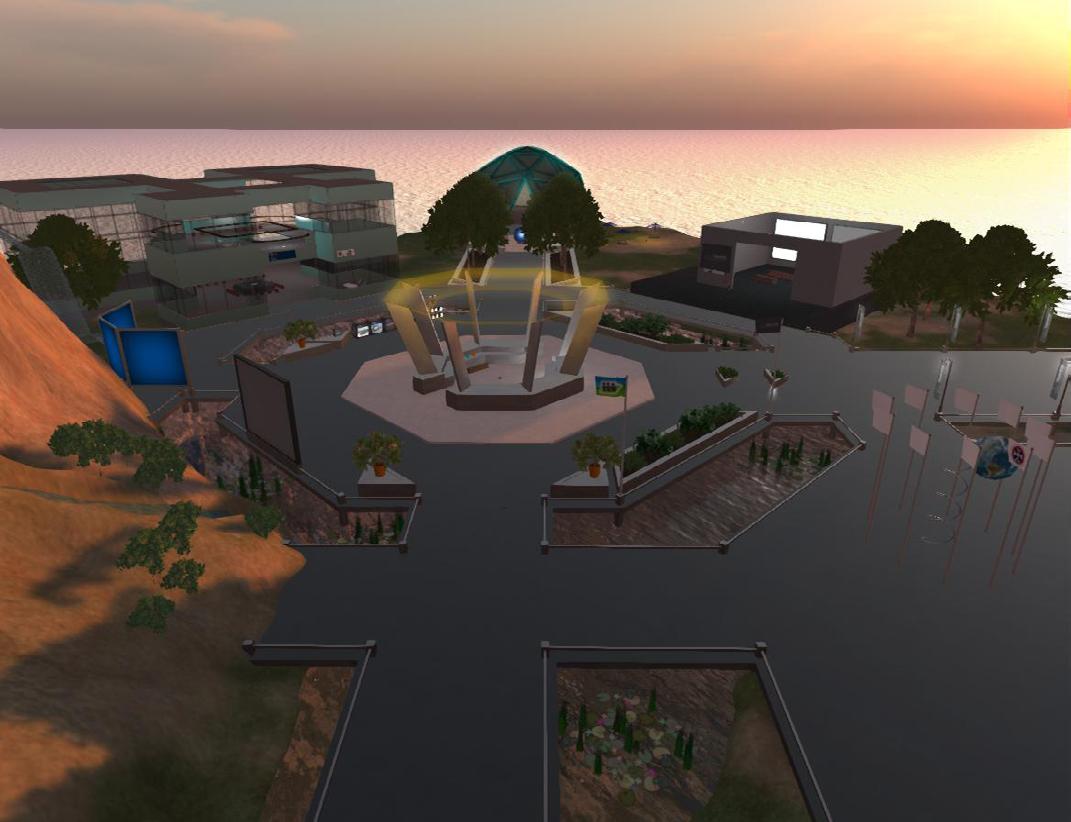

• Experimenting with porting the Virtual Oil Rig via the OpenSim OAR Converter to Unity3D.
• Experimenting with porting to multi-user collaborative virtual worlds such as Sine.Space.
• Investigating use in virtual environments designed for immersive experiences using VR headsets.
• Experimenting with porting the Virtual Oil Rig via the OpenSim OAR Converter to Unity3D.


• Further integration into taught modules
• Use the Virtual Oil Rig for assessment of key skills
• VR simulations
• Increasing student partnership
• RGU Oil and Gas Institute: http://www.rgu.ac.uk/ogi/
• Virtual Oil Rig: http://blog.inf.ed.ac.uk/atate/2013/05/08/aberdeen-oil-rig-visit-on-rgu-islands-in-opensim/
• Blog Post featuring OpenSim OAR Converter to Unity3D: http://blog.inf.ed.ac.uk/atate/2015/10/24/opensim-oar-convert-to-unity-scene-with-windows-interface/
• Blog Post featuring Virtual Oil Rig in Unity3D/Sine.Space: http://blog.inf.ed.ac.uk/atate/2017/01/24/sine-space-rguoil-rig-region-live/
• Blog Post featuring Virtual Oil Rig in Oculus Rift VR: http://blog.inf.ed.ac.uk/atate/2016/07/20/oil-rig-training-environment-in-vr/
• Open Virtual Collaboration Environment Region http://openvce.net/vwassets/
Contacts
• Jo-Anne Tait: j.e.tait@rgu.ac.uk
• Colin Hetherington: c.hetherington@rgu.ac.uk
• Austin Tate: a.tate@ed.ac.uk
Acknowledgments
Article based on Tait, J., Hetherington, C. and Tate, A. (2017) Enhancing Student Employability with Simulation: The Virtual Oil Rig and DART, Poster Presentation, 3rd International Enhancement in Higher Education Conference: Inspiring Excellence - Transforming the Student Experience, 6th-8th June 2017, Radisson Blu Hotel, Glasgow, UK. The Quality Assurance Agency for Higher Education, UK.
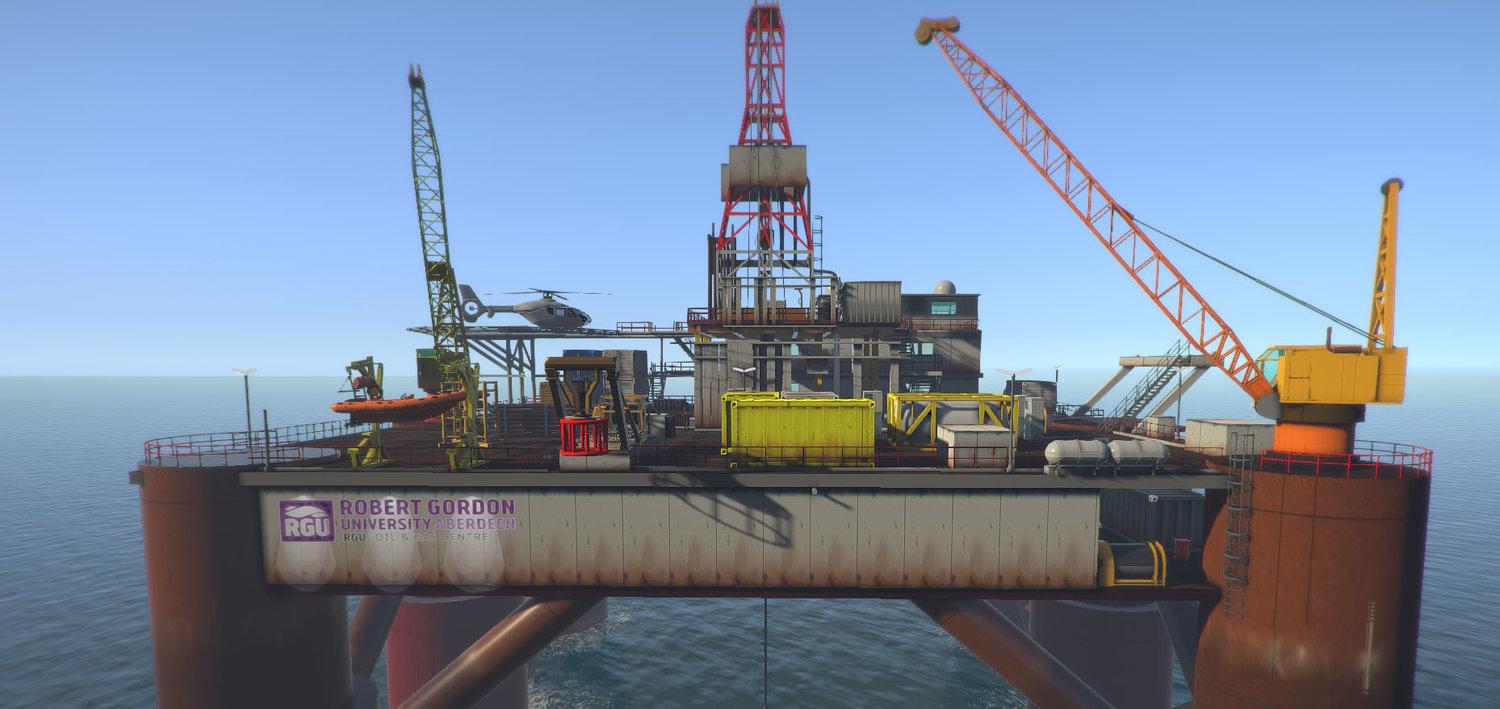

If you can’t attend in real life, join us on Tuesday afternoon, June 27th during the playground from noon to 3:30 pm (slt), 2-5:30 pm (Central Time)
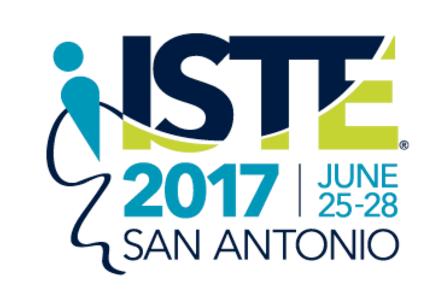
A close friend in Second Life once brought me to club with a trivia event offering a cash prize that he often won. After the event, he joked, “You did pretty well this evening. You’re not allowed at trivia anymore.”
Fortunately, that was not the end of our participation in trivia together. He was perfectly happy to bring competition to a place where the trivia prize is writing and presenting the next week’s questions.
Since then, thanks to a terrible inability to sit on my hands so I can’t type, I’ve written several sets of trivia questions for Callahan’s Crosstime Saloon. These include half of a set called “Twins” after the same friend and I, tied for first place. We both failed to answer the tiebreaker question.

However enjoyable “winning is losing” trivia may be, it’s hardly the main purpose of its location. One great joy some folks find in Second Life is the ability to bring to life fictional places you wish with all your heart and soul were real.
by MadKitty Aabye
Science fiction author, Spider Robinson, created a series of books about a bar where empathy and puns—oodles of puns—meet. The books, beginning with Callahan’s Crosstime Saloon (Publisher: Ace, 1982), feature a bartender so skilled at listening that all the regular barflies assist, especially when someone makes a toast.
The toasts can be the usual variety that honor or celebrate a person or occasion, but more often, they describe problems with which the speaker desperately needs help, or at least understanding. Toasts end with the cathartic crash of an inexpensive beer glass in a fireplace. Patrons and staff assist and offer sympathy, fight entropy, and occasionally save the universe.
Touched by the books and the interactions of its characters, fans created Callahan’s as they imagine it and the result can be visited at the Conch Republic: http://maps.secondlife.com/secondlife/Conch%20 Republic/143/140/22.
A line facing the fireplace allows anyone to make a toast, then toss the beer glass into the fire at the end. Regulars listen whenever someone steps up to the line. As in the book, no one is pressured for stories or elaboration that they’re not ready to tell.
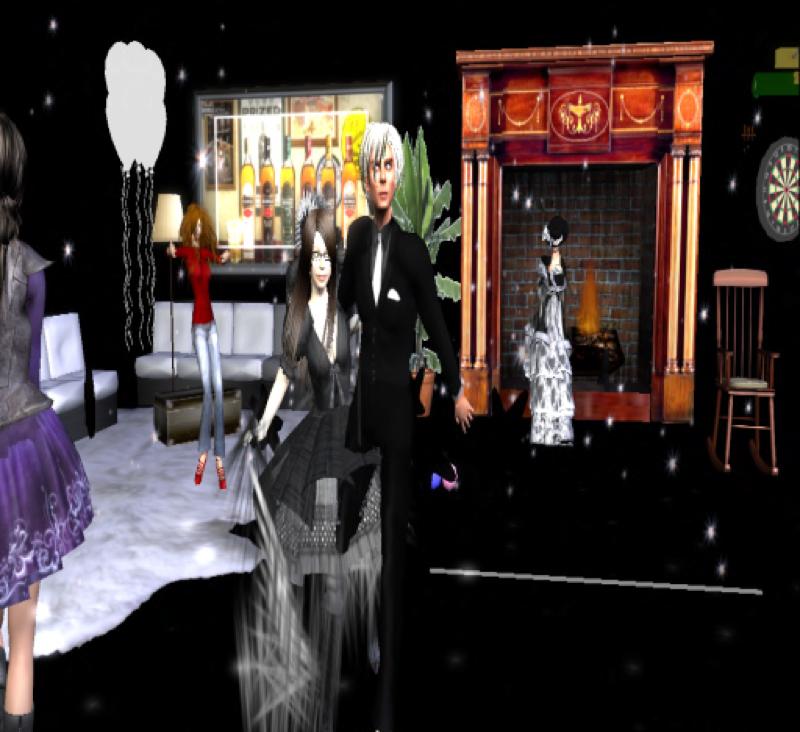
Trivia, which takes place Friday nights at 5:30pm SLT, is a tradition lifted directly from the book’s pages. The presenter gets to choose the topic, which can be absolutely anything.
The book also includes a Punday event which morphed into Unday in Second Life to include a wider variety of activities. It takes place on Tuesdays at 6:00pm SLT, and you might find puzzle boards, game nights, weird avatar nights, tacky clothing nights, or just plain hanging out—all of which frequently involve heavy punning, as well as companion animal appreciation (and typing. Don’t ask—though if you have a cat, you probably don’t have to).


“Avatar Makeover Night” was all fun and games until someone (*looks innocent*) found a Mr. Potatohead avatar.


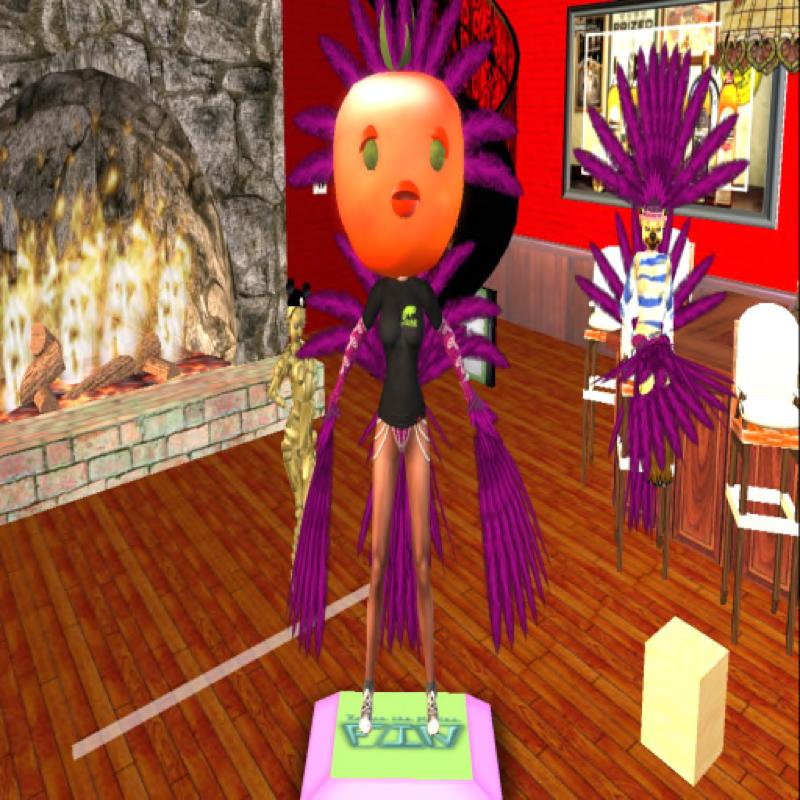
About once every quarter, Callahan’s holds a themed dance party for one or more special occasion. When two fall close together, events such as Chinese Mardi Gras—for Chinese New Year and Mardi Gras— occur.
Even single-holiday events usually get clever names, such as “Come Asp You Are” for St. Patrick’s Day and “Monster M*A*S*H” for Halloween. The latter was a relief after spending the previous Halloween being pushed around by candy corn evil enough to give Cthulhu a run for his money.

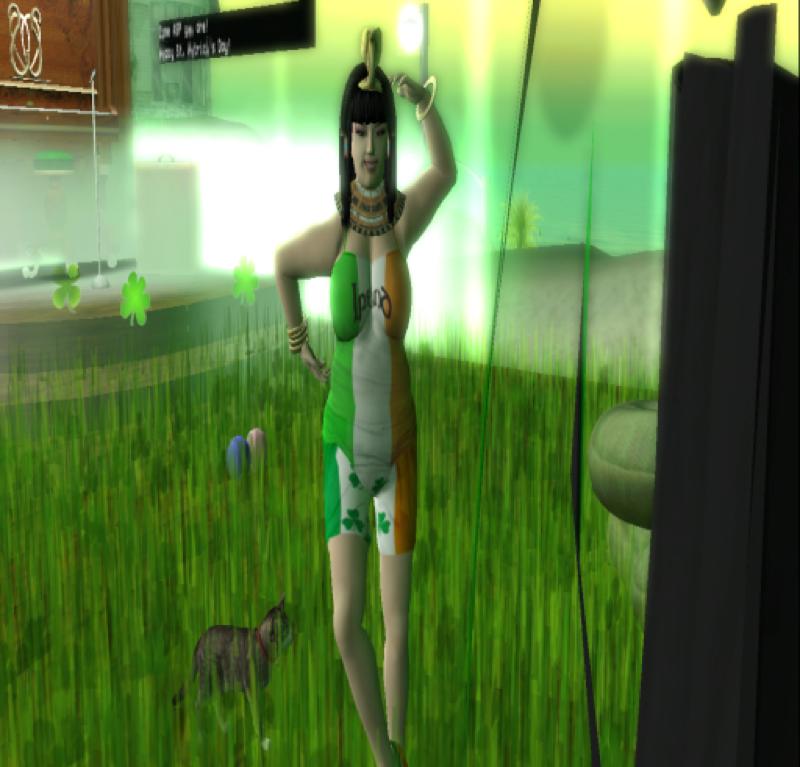


Senior patrons run the bar and host events, with the help of a new patron-at-large every quarter. Lebachai Vesta decorates for special events as well as handling the land. Cisop Sixpence’s 80’s radio station streams at the site, often offering “psychic radio” as songs related to or mentioned in conversation suddenly play. Dutch Galaxy and I take pictures, in which he insists that I get his “good side.” I promise to do so as soon as we figure out which side that is!
While Second Life Callahan’s staff and patrons enjoy each other’s company and these events, we hope to create new Spider Robinson fans or meet old ones, and promote
reading in general.
It seems to be working—they managed to get me to read 5 of them soon after arriving and I’ve found other unrelated reading suggestions through my fellow barflies.


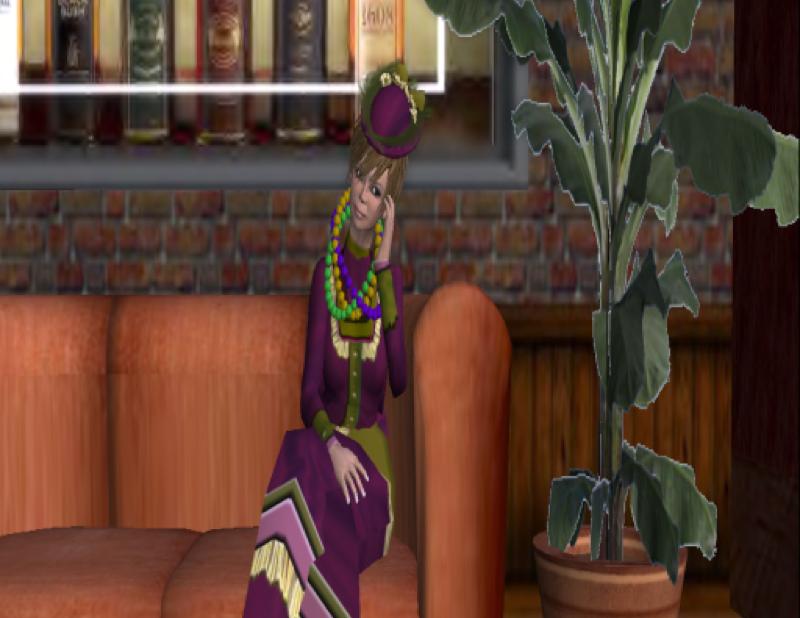



By A Review By: Bluebarker Lowtide (sl)
It’s here! The comprehensive and most referred to of documents concerning technological change in education. If you don’t know, this sixty-page pdf (print a copy if you want, I know I do) takes a realistic look at the current and growing trends in education while making predictions and suggestions and outlining points of interest to monitor over the coming year.
This will be the fourteenth edition released by the New Media Consortium (NMC), and for the last few issues, a joint venture by the EDUCAUSE Learning Initiative (ELI). I look forward to every release and I have a printed copies made of the K-12 Edition, the Higher Education Edition, and the Technology Special Issues. Working within technology in education for so long, the Horizon Report is in my bag of tools as an Instructional Designer; and, I should say, should aid school faculty and teachers for fairly accurate forecasts of educational trends.
Looking at the main 10 points, the Horizon Report ultimately hopes to start a genuine discussion about the advancement of student learning and helps look at areas of trouble and identifies ways to alleviate most of the short term goals. The goals identified by the Horizon report grow more difficult with the increase of time. For example, the short-term goal can be done within one year, the mid-term goal can be done within two to three years, and the long-term goal can be done within four to five years. With some goals, however, there are often challenges that present unique difficulties per school/ district/university due to their regional position, level of
diversity, and balance between rural/urban makeups.
An easy short-term goal of incorporating more opportunities of blended learning and collaborative has been seen on the rise for the last five years with the production of more and more ways to share and collaborate online with programs/apps such as Google Hangouts, Adobe Connect, expanded features with Skype, and more. Students are able to work both synchronously and asynchronously with these programs. Some universities are going the extra mile and creating their own proprietary software to implement online work spaces among their faculty and students.
The collaborative programs/apps also known as groupware are seeing more and more options and implementation within LMS. This is a clear sign of recognition of the importance of the benefit of group learning and collaborative learning for the twenty-first century professional student and future workforce member). Blackboard, Moodle, Wimba, and Canvas are a few of the mainstream LMS present in colleges and universities across the United States. The evolution of LMS to incorporate these features was also seen back in 2014 in a paper named, “The Current Ecosystem of Learning Management Systems in Higher Education: Student, Faculty, and IT Perspectives” [https://net.educause.edu/ir/library/pdf/ers1414.pdf] published by EDUCAUSE.
I think one of the mid-term goals outlined by this year’s report identified (or should I say recognized) the ‘Achieve-
Horizon Report > 2017 Higher Education Edition

ment Gap’ as a difficult challenge to resolve and states the solutions as “elusive.” For me, this has always been an issue that arose with technology, even from the mid-nineties, there would always be issues with schools and districts with low funding for “computers” to even have a computer lab, let alone enough to store the reference catalogues for libraries.
Technology was at first shiny and new and compared to a typewriter, far more efficient and complicated beyond belief. Trying to print something off of the computer back then was a monumental feat to those who had both a working connection between a computer and a printer. But to have technology, that is , to have access to it or to even have it now, is a challenge faced by many people.
An overtime comparison data chart by Pew Internet Research published this year shows that as of November of last year, ninety-five percent of Americans owned a cell phone device, seventy-seven percent of those are considered smart phones. Perhaps the shift of having a computer or a laptop is superseded by the portable computer that fits in ones’ pocket. However, this also equates to the “Technology Gap” especially seen at the University level. Some Professors only accept digital submissions on a LMS for final grades. Some students do not have the luxury of working in their dorm rooms with a laptop and are bound by the hours of the campus library or the college computer lab. I believe for higher education that the Achievement Gap and the Technology Gap is the same in most cases. Some Universities recognize this issue and offer loaner laptop services to students in need; but such programs are non-existent at many community colleges where the need would be highest.
Working within virtual environments and seeing such a drastic change in education for the last ten years, I feel that the long term goals of managing knowledge obsolescence and rethinking the roles of Educators was already happening. If something becomes old and obsolete, in the fastpaced world of social media, it’s easy for old information to become buried by the most recent and current information thus decreasing the spread of old information. But, this report mentions trying to find a balance between rapidly changing technologies and efficiency for educators to apply meaningful implementation of technology to boost deep learning in students.
It is true that technology does change rapidly. Your new smart phone, for example, will feel obsolete by the time next year’s smart phone is unveiled. A huge problem across all levels of education is the investment value of ever-dwindling school budgets. To choose a technology and then have a faster and cheaper version come out the following year is a frustrating endeavor that grows harder every year. To abstain from purchasing these new technologies often leaves schools and teachers not able to prepare their students for the outside world. But higher education has access to more grants and larger sums of money than public education does. For example, I know of a librarian that had to complete a grant proposal just to get the money to have a pet hermit crab and feed it for the year. Higher education institutions not only have access to more grant funds, but they have access to research contracts, and military applications that pay serious money to have the latest technology in those classrooms. How is that fair?
Well, for the most part, in current teacher preparation classes, they are saying that a teacher isn’t “just” a teacher and it’s important we start this for the next generation of teachers. They need to learn and understand that the job of a teacher goes far beyond the classroom and that there will be many hats that a teacher wears before, during, and after the instructional school day. If there is one thing to be said, it is that a teacher’s job is never done. Between preparing for lessons, fixing class materials, asking deep questions, and reviewing assessments, a teacher’s day is never ending.
The thing I appreciate most about this Horizon Report is that it is realistic and it understands a great deal of not just one district’s problems, but it looks at the United States and International educational trends as well. It takes a look at what others before us have done and tries to help us through this educational paradigm shift that so many have gone through and/or are still discussing. Technology is a tool that is meant to help us strive for a better future and the movers and shakers of tomorrow are in your classrooms everyday and everywhere.
Be sure to take a moment and download the free pdf from New Media Consortium and get a jump on the future of technology in education.
Additional Links:
http://www.pewinternet.org/fact-sheet/mobile/
https://en.wikipedia.org/wiki/Collaborative_software
https://www.commonsense.org/education/top-picks/ best-student-collaboration-tools
Interested in these emerging technology topics? Learn more about them and other edtech insights by “liking” us on Facebook at facebook.com/newmediaconsortium and on Twitter at twitter.com/nmcorg.
https://net.educause.edu/ir/library/pdf/ers1414.pdf
Horizon Report > 2017 Higher Education Edition


The Virtual Pioneers, a group that has been exploring culture and history in Second Life since 2007 had an action-packed year. We continued our fantastic tours and special events throughout 2016. Below is a quick review of some of our events. If you would like to learn more about our group, or more importantly join us, you can find our information at our Website: http://virtualpioneers.weebly.com We welcome anyone that has an interest in culture and history. Please let us know how we can help you get started
We have to thank everyone who made it possible: Susan Welles and Caitlin McLemore procured the prizes that were the added incentive to our hunters; Laura Sheehy and Laura Briggs who provided information and suggestions; Trish Cloud who was our Voxer administrator; and Chris Luchs and Sherry Jones who staffed the lobby and helped round people up at the end.
We’ll be creating another mobile quest for ISTE 2017 in San Antonio. If you are interested in helping please let us know. We need everyone but if you are a San Antonio resident – we could really use you for reconnaissance! Please email me – Kae Novak at gamesmooc@gmail.com.
Our Tours from 2016
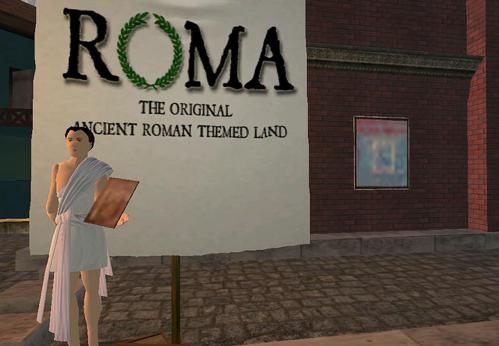
January 24th - ROMASLURL: http://maps.secondlife.com/secondlife/ROMA/186/58/26
Isa of Chaeronea (Isabelle Inkpen) led a tour of ROMA (SPQR), a long-established ancient role-play sim. We toured a Roman Legionary Fort, the Roman Baths, an Arena and a Roman Legionary Fort. If you want more information on this group, go to their website: http://romacitizens.com/ Lots of ways you can experience this group and the history of Rome.
By Mary O’Brien and Andrew Wheelock

Feb 7th - Tour of Syrinx - A Viking Roleplay
SLURL: http://maps.secondlife.com/secondlife/Syrinx/179/53/22
Portia Lytton led a tour of an authentic Viking roleplay sim. This tour included the merchant area, sauna, hot springs, fjord, and longhouse. This tour provided lots of fascinating details of Viking history and culture. Portia Lytton led a tour of an authentic Viking roleplay sim. This tour included the merchant area, sauna, hot springs, fjord, and longhouse. This tour provided lots of fascinating details of Viking history and culture.

Feb 21st - Tour of ORBIS ROMANUS
SLURL: http://maps.secondlife.com/secondlife/Serena%20Karora/14/112/25
We returned to learn more about Roman History as well as some Greek history with the Orbis Romanus Tour. Clavdivs Secvndvs Petilianvs led a tour of this open air museum with information about Roman and Greek history and Archaeology. We also saw true reconstructions of buildings of the Roman and Greek world.
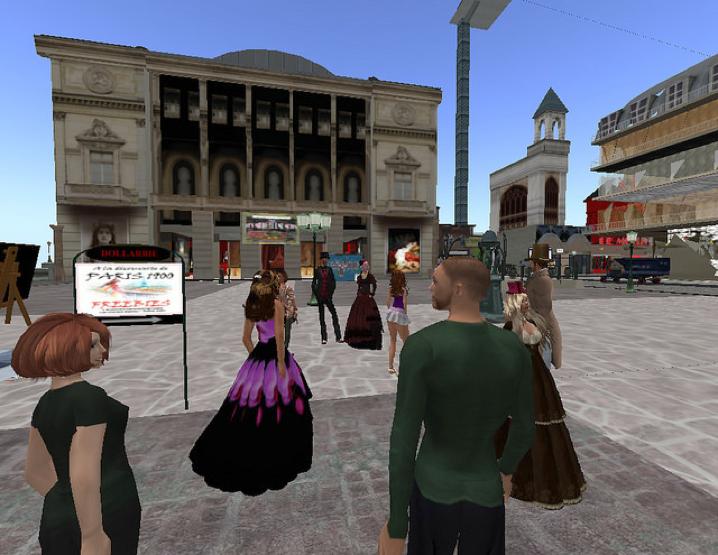
March 6th Paris 1900
SLURL: http://maps.secondlife.com/secondlife/Paris%201900/29/126/24
The Virtual Pioneers, a group that has been exploring culture and history in Second Life since 2007 had an action-packed year. We continued our fantastic tours and special events throughout 2016. Below is a quick review of some of our events. If you would like to learn more about our group, or more importantly join us, you can find our information at our Website: http://virtualpioneers.weebly.com We welcome anyone that has an interest in culture and history. Please let us know how we can help you get started

March 20th - O’Hare’s Gap
SLURL: http://maps.secondlife.com/secondlife/Wilde/195/187/26
We have to thank everyone who made it possible: Susan Welles and Caitlin McLemore procured the prizes that were the added incentive to our hunters; Laura Sheehy and Laura Briggs who provided information and suggestions; Trish Cloud who was our Voxer administrator; and Chris Luchs and Sherry Jones who staffed the lobby and helped round people up at the end.

April 3rd - Visit Camelot on Lingnan Drama Island
SLURL: http://maps.secondlife.com/secondlife/Lingnan%20Drama%20Island/150/173/25
Brant (MrK Kas) led us on an Arthurian adventure. This sim has information about King Arthur and Beowulf and has a full sim hunt called, The Quest. We had lots of fun questing!

April 17th -”Walk Like an Egyptian, Only Naked”
Virtual Pioneer Headquarters
SLURL: http://maps.secondlife.com/secondlife/EduIsland%209/101/71/22
This meeting provided a Lecture by Isabelle Inkpen (Isa of Chaeronea) of SPQR ROMA. Isabella teaches art history at San Jose State and History at San Francisco State. The Greeks were famous for going nude in certain circumstances. They exercised in the nude and so the gymnasium was the “naked (gymnos) place.” But why? We learned about this culture and its unique clothing history!
May 1st - Support Ukraine and Ukrainians against the Soviet Threat
SLURL: http://maps.secondlife.com/secondlife/Inverness%20City/235/68/22
Tiffany Mosienko (Ti Mosienko) presented a 1920 roleplay lecture. She plays an activist, giving an impassioned speech against Soviet Communism.
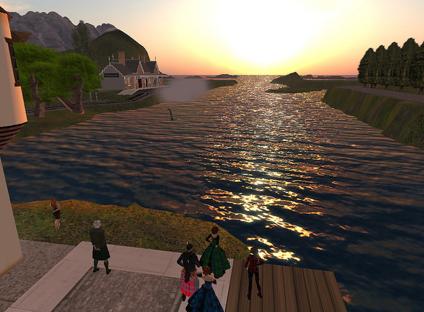

May 15th - 5:00 pm SLT - Scottish Highlands -
SLURL: http://maps.secondlife.com/secondlife/Inverness%20City/235/68/22
Ethan MacAlpin (Ethan Westland) led a tour of the Scottish Highlands during their 8th Year Anniversary Celebration! We started the tour at the Loch Ness Exhibition Centre and will continued to explore the other highlights of this beautiful sim. This is a beautiful tour that gave us some wonderful views of virtual Scotland, but also some Scottish Slang words to use on our friends!

June 12th - Victorian Caledon
SLURL: http://maps.secondlife.com/secondlife/Caledon%20Oxbridge/149/215/30
Beth Ghostraven led this tour of Caledon. We began our tour at the Hall of Caledon, and then participated in the Caledon Quest. This tour was a great way to experience the Victorian Era with collaboration and interest. The tour ended at Beth’s lovely Pub for some spirits and good old fashion conversations.

July 10th at 5:00 pm SLT - Summer Social - Howard Hughes Send Off Party!
On July 10, 1938, Howard Hughes and his crew, boarded his Lockheed Super Electra 14-N2 plane to start their 4-day journey around the world, breaking the world’s record. The Virtual Pioneers made plans for a virtual send-off party for Howard and his crew. This was a fantastic event that was put together by Helena Kiama and Serena Offcourse. What a fun way to go back in time!

July 24th - Japanese and Chinese Traditional Musical Instruments
SLURL: http://maps.secondlife.com/secondlife/Sea%20Escape/160/209/22
Aisya Destiny shared her interesting and unusual instruments at her store, Haiku. Our musical tour included some of the following instruments: Shamisan, Shakuhachi, Kugo, Harp, Koto, Taiko, Guzheng, Kotsuzumi, Oiran Dochu, Biwa, Kokyu, Erhu, Jinghu, Banhu, Ruan, Pipa, Sanshin, Sankyoku, Shamisen, Flute, Tsuzumi, Drum, Yueqin, or Kantele.. Our members had a chance to listen to the different instruments and compare their composition and tone. Fascinating way to learn about music.

August 21st - Museum of Aviation
SLURL: http://maps.secondlife.com/secondlife/Serena%20Balmoral/215/30/22
Luke Flywalker (LukeFlywalker Fittinger) led a tour of the Baitoushan Museum of Aviation. Luke is an educator and pilot in RL. His museum traces the history of aviation from lighter-than-air flight through modern jet aviation. This tour provided a really great overview of the history of aviation with lots of facts, images, and completely scaled Airplanes.

September 18th Parc de Sanssouci
SLURL: http://maps.secondlife.com/secondlife/Rajika/130/219/1988
Claire-Sophie de Rocoulle led a tour of Parc de Sanssouci where we toured a model of the Great Terrace garden constructed by Frederick the Great. This tour gave us an interesting look at German/ Austrian History and politics. More information can be found at: https://en.wikipedia.org/wiki/Sanssouci.
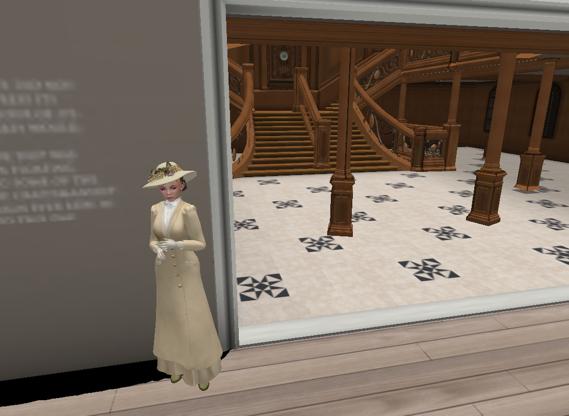
Emery Milneaux gave this tour of this temporary exhibit about the history of the Titanic. We travelled back in time and experienced the wonder and tragedy of the most famous ocean liner, Titanic. This immersive exhibit tells the dramatic and poignant story of the ship, crew, and passengers who embarked on the voyage of a lifetime, only to be part of one of the greatest disasters in history.

Lisisme Dubrovna led us on a tour of the highest mountain in Second Life. We visited a Tibetan Village and Temple, while trekking through blizzards to the base camps. Maybe there will even be time for some hang gliding or a scenic balloon ride to the summit. This tour offered some amazing panoramic views as well as interesting history of Mt. Everest. October 16th - Tour of Mt. Everest SLURL: http://maps.secondlife.com/secondlife/Mt%20Everest/84/23/93

October 30th - Halloween Historical Costume Party
For a Halloween warm up we had a historical costume party that included SL dancing and prizes. Lots of light hearted fun for everyone.

November 13th - New Palermo
SLURL: http://maps.secondlife.com/secondlife/Whispering%20Mountain/216/245/25
Junior and Momma Avery led this tour of a 1930 roleplay community. New Palermo is a town on the coast of New Jersey, an area known for its bloody history of piracy and smuggling. We had a great time learning about this interesting location through a roleplay experience.

December 11th - 5:00 pm SLT - The Walden Pond WalkSLURL: http://maps.secondlife.com/secondlife/Merlin%20Gardens/91/166/26
This tour had us experiencing Henry David Thoreau’s Walden Pond. On July 4, 1845, Thoreau embarked on a two-year experiment in simple living when he moved to a small, self-built house in a second-growth forest around the shores of Walden Pond. We had small excerpt from Walden read by Spiff. It was a lovely evening with a splash of relaxation.
[Editors Note: Learn more about the Virtual Pioneers at: http://virtualpioneers.weebly.com/ and visit their headquarters in SL at: http://maps.secondlife.com/secondlife/EduIsland%209/105/72/22 ]

By Kim Harrison, VSTE Member, Instructional Technology Specialist, Virginia Beach City Public Schools
This summer educators interested in learning more about Minecraft are playing in survival mode with the Virginia Society for Technology in Education (VSTE) at the Minecraft server, VSTE Place.
Kim Harrison, former VSTE Virtual Environments Professional Learning Network (VSTE VE PLN) chairman, got the idea after playing survival Minecraft with the Electronic Village Online (EVO) Minecraft MOOC this past winter. Having always played in creative mode, she’d never realized how much fun Minecraft can be when challenged to mine, farm, build, and craft for a reason, not to mention struggling to stay alive while battling mobs (monsters that spawn randomly in the game)!
The goal of the Summer of Survival is to learn why our students love this game so much, get enough experience to feel comfortable using Minecraft as an instructional tool, and develop a group of friends who can help each other with teaching and learning activities related to gaming. Participants will sometimes find themselves alone at VSTE Place, but more often will run into other players with whom they can text chat in Minecraft or talk in Discord. Doodle will be used to schedule planned synchronous get togethers for exploring, learning the basics, or taking on an advanced task like taming zombie villagers! Whatever your level of play, there will be something for you at VSTE Place.
Educators began playing mid-May and will continue through the US Labor Day weekend, September 5th this year, exploring and playing together. VSTE will award a certificate of achievement for players accomplishing a short list of accomplishments:
1. Join VSTE VE PLN on Google+ and introduce yourself as a member of Summer of Survival. Be sure to give us your Minecraft name. https://
goo.gl/idBxpr
2. Survive your first night - build a home
• Hint: Build into mountainsides so you can tunnel at night and find resources.
• Share your home with a friend - make your life easier!
• Post a picture on VSTE VE PLN’s Google+ of your home and important accessories. Share how things are going for you.
3. Continue to learn important skills that you need to know:
• Gathering resources, do some mining and learn crafting.
• You will need a farm next. Gather some animals and plant some crops.
4. Participate in a synchronous meeting in Minecraft. (Find a friend and work together.)
5. Explore new parts of the world, post pictures on VSTE VE PLN community on Google+ with a short post about what you saw. (There is safety in numbers, take some buddies. See Events page for help connecting.)
6. Find a couple of helpful tutorials on YouTube and share the links on VSTE VE PLN on Google+
7. Share an “AH-HA” moment on VSTE VE PLN on Google+
8. Participate in at least one of the VSTE Minecraft Mondays (regular meetings occurring the first non-holiday of the month at 8 PM EDT in VSTE Place) and make a comment on VSTE VE PLN community on Google+ (July 10, August 7)
9. Make connections between your learning and lessons in the classroom. What did you learn?
How would you use this in your classroom?
Post your thinking to the VSTE VE PLN community on Google+
10.Have FUN!
Participants will likely come away with a network of new friends who use Minecraft with students and have a collection of instructional ideas. They will also gain practice with Google+, Discord, and Doodle. A Google site has been created for this project: https://sites.google.com/view/vstesofs17 A Google sheet is being used to track progress toward the VSTE certificate.
There are 17 gamer educators currently participating and 3 student helpers. Another 15 teachers will join soon from Virginia Beach City Public Schools where recertification points will be awarded to its educators upon completion.
More are welcome. Simply contact Kim at K4sons@ gmail.com with your PC or Mac Minecraft account name and she will reply with login details.




The “safe house” at the spawn in survival. Here novices can enter the building by right clicking the door to hide from any mobs that might be around.
Inside are recipes for building basic tools and some building materials to get started. Many thanks to our experienced players for building this and to our students, Bented, Obowsox, and Owltown for adding the helpful recipes.
For more information about getting started with Survival Minecraft, be sure to watch https://plus. google.com/u/0/109862897560500987582/ posts/j51waPVfjJM?cfem=1 The video explains the basics, such as how to get started, how to find Summer of Survival, and a tiny bit about how creative and survival differ.

Finally, spring has sprung! It’s about time to get rid of those dark winter dregs and brighten up our wardrobes. So, we girls decided to spring into action!

We met at ISTE on April 19, 2017 and stood in front of the green screen to get our before pictures.






Helena is ready to lead the charge. First stop is Rezology, one of Helena’s favorite hair stores.
Rezology. We had lots of fun trying on all the demos!
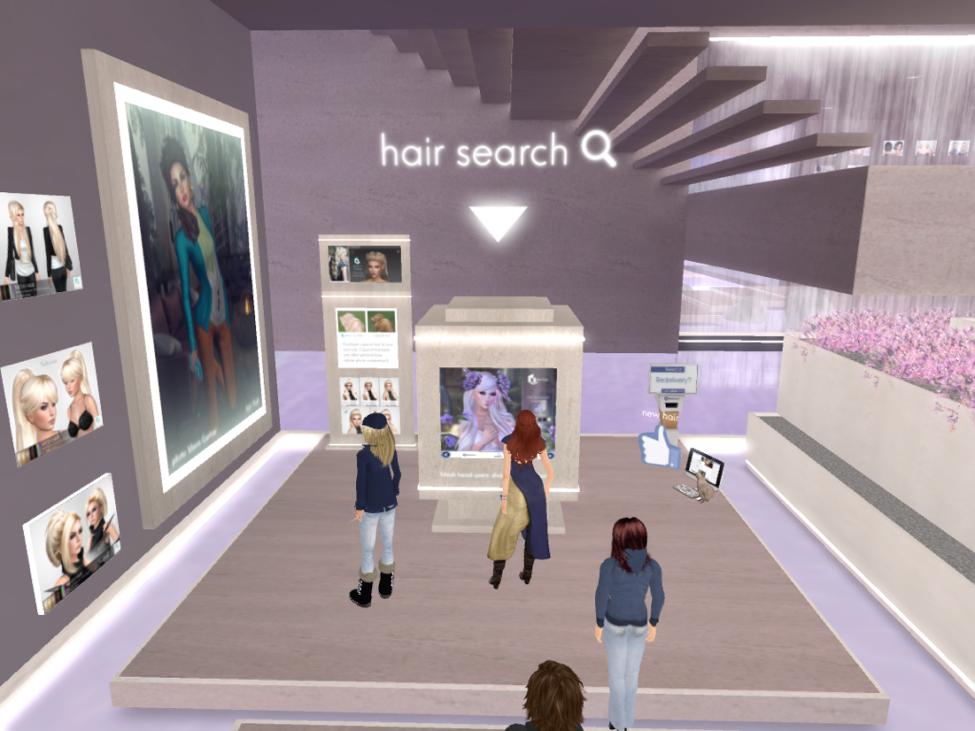
..-a DEMO rezology Mezzaluna (rnesl1 l1air)
f · ! WARMING - PLEASEREAD!

(*; · DEMO rezolog_y Mezza ,luna (no modif)". )_(no transfer }_(worn on Skull} __
.____
f:) Instructions and Thank You frorn rezology (August 2016)
if" : rezology Affiliate Venclor (50% cornrnission) ( no modify )
(; · rezology Hair HUD (no 1T1odify) ( n o transfer)
I'':rezology Lusterligl1t (optional) (no n1oclify) ( no transfer)
rezology Null Hairbase (no modify ) (no transfer)
rezology Shape Template (August 2016) (no transfer)
'!• rezology store
Checking out the demos!
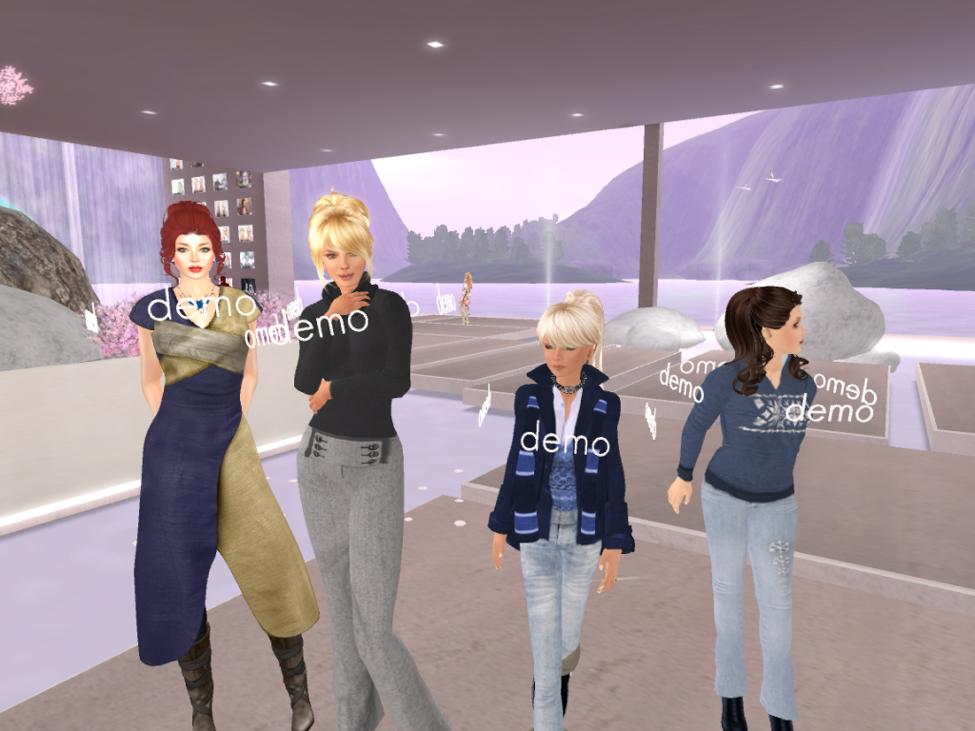

Doesn’t Roxie look great?
Mesh hair with a ponytail!
Alli&Ali Design Mainstore. This is one of Beth’s favorites! The great group gifts and Lucky chairs make this shop a lot of fun!

Be sure to join the group to get the special gifts.
What makes Alli & Ali so much fun are the prizes. Helena found the Egg Hunt prize!


So many hair options – should we mesh or go classic?

Serena as a blonde! We shall see if “Blondes have more fun”
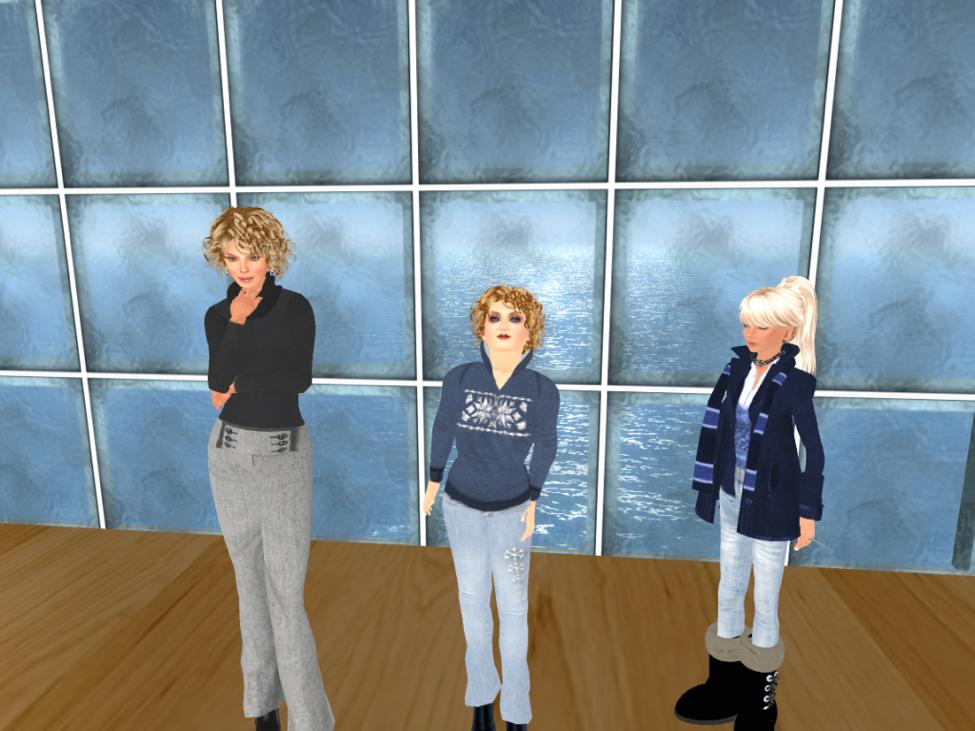
Lookin’ Good. Roxie opts for some beautiful mesh hair, Beth and Serena decides to do flexi curly hair.
Free Dove. What makes Free Dove so great is all of the freebie stuff! Free Dove is one of the best places for shopping when you are a newbie!

As we were shopping, we all got excited because we found a new version of the pink dress we all had on when we first rezzed into Second Life.
Meet Roxie. This was her original Rez home and original Rez Day Pink Dress!
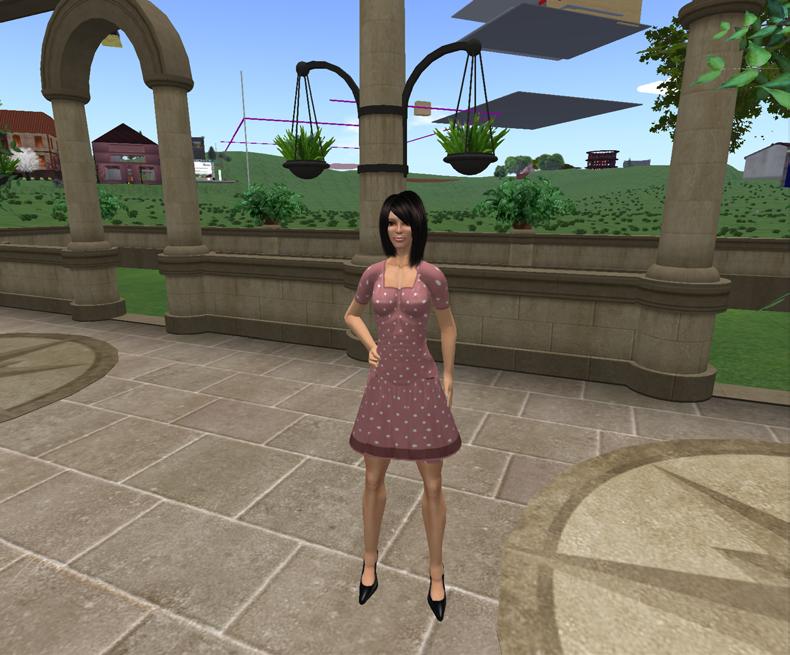
Funny how we all looked so much alike back then! And we wondered why everyone could tell who the newbies were!
Beth, in


As we were shopping, Xenia came by and joined us. She put on a pink dress, too.

They come in different colors, so Helena also chose teal. The good news is grab more then one since they are all FREE at the Free Dove!


And we wouldn’t be stylin’ without the Jewels. After all, “diamonds are a girl’s best friend!” And, the price is right at the Free Dove!
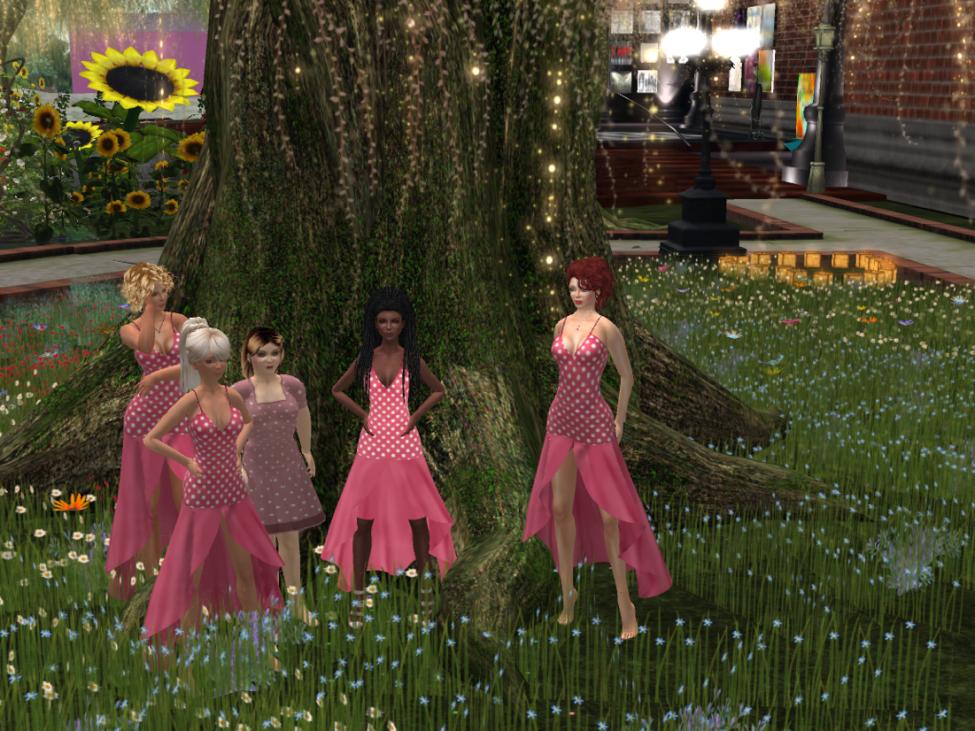
As it was getting late, we all went outside the Free Dove and posed under a tree in our pink lady outfits. Beth decided we should take a picture to show how much our style choices have changed since our first Rez Day in Second Life.
April 20, 2017 – Chilbo Garden Party ISTE VEN Social

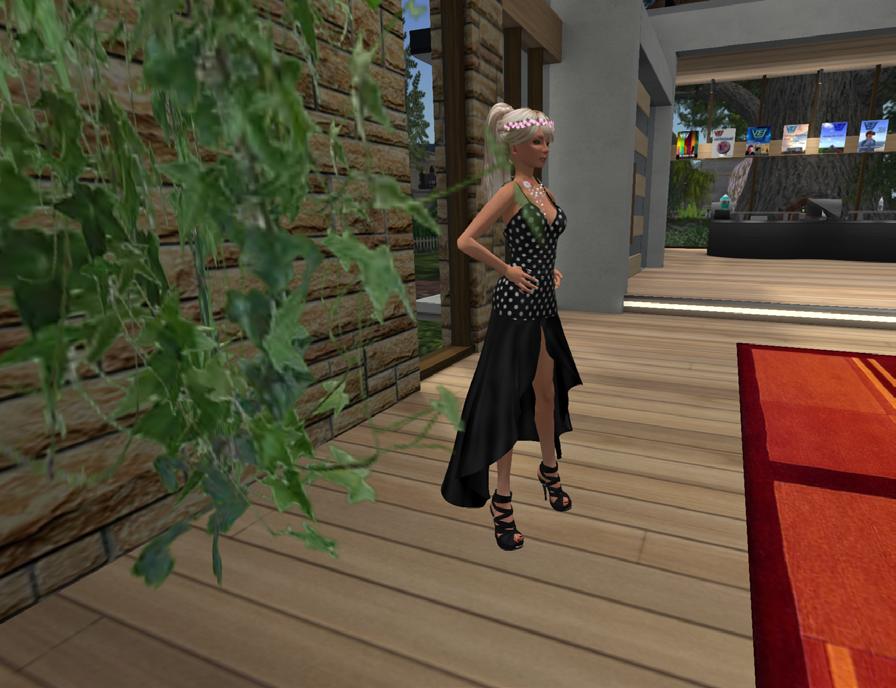
Taking it up a notch. After all, the price was right – so Roxie decided to get the black dress, too!
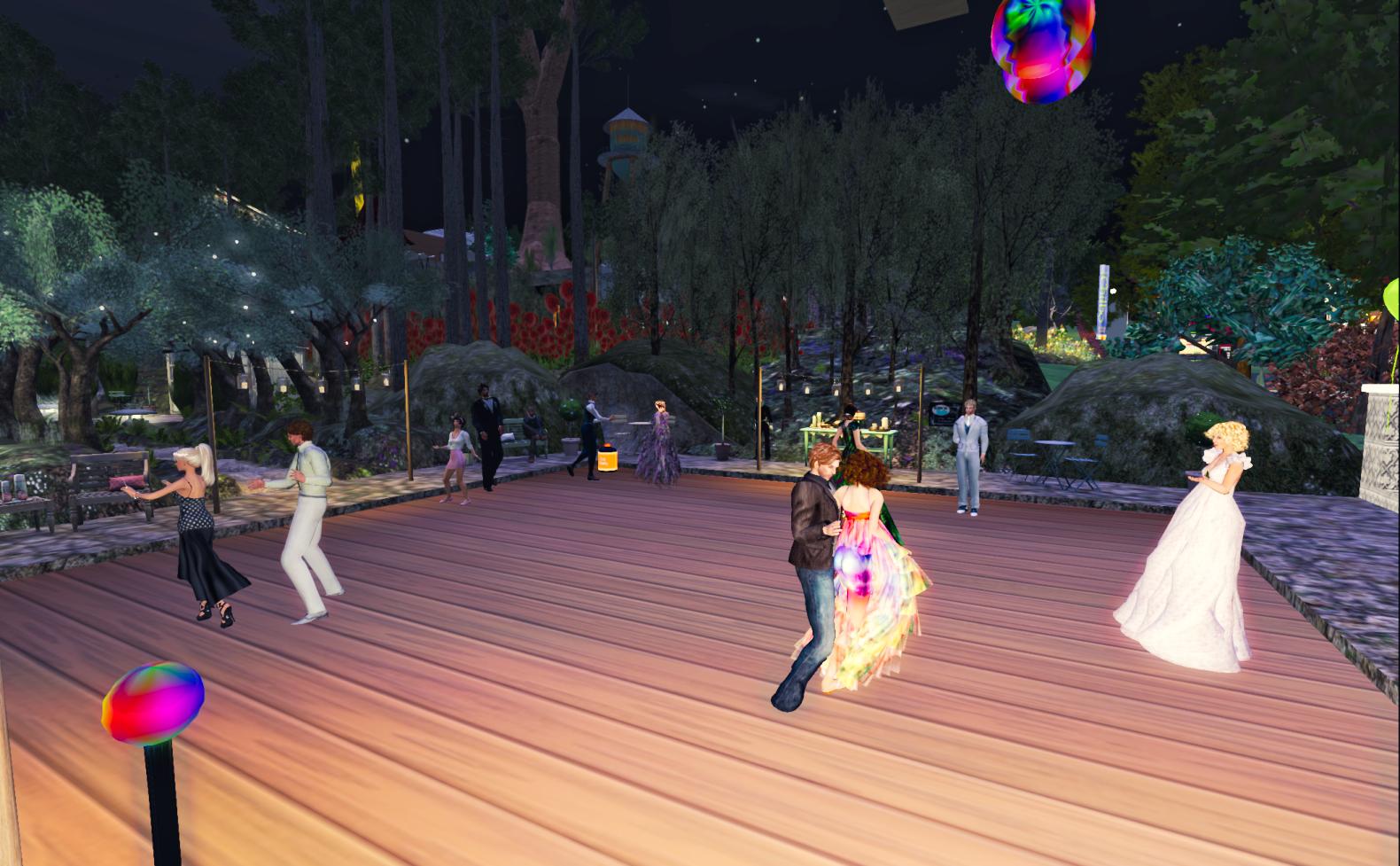
At Chilbo Garden Party – Roxie in Black and Serena in curls! Oh, what a night! Maggie Larimore always knows how to throw the best parties. Chilbo is such an amazing venue. And, it wouldn’t be “the party” without our special friend Coz Okelly as DJ!
Thanks Girls for such a great night out! Let’s do it again!!!
By Vasili A. Giannoutsos, VSTE VE PLN Chair aka, Bluebarker Lowtide (SL)
As the Summer approaches we hope you will sit back, relax, and join us once again for VSTE’s Annual Summer Book Club. With the poll closing Friday Night, we had a close race this year. But the final results are in:
we have Communities of Play.
The Power of Neurodiversity: Unleashing the Advantages of Your Differently Wired Brain.
we have Snow Crash.
In second place, we have Player Piano.
we have Bit by Bit: How Video Games Transformed Our World.
Bit by Bit: How Video Games Transformed Our World - Kindle edition by Andrew Ervin. Arts & Photography Kindle eBooks @ Amazon.com
A place to get the book: (ebook $18/Hard $18) 293 pgs is at Amazon: https://www.amazon.com/Bit-VideoGames-Transformed-World-ebook/dp/B01M1BMHJ8/ref=cm_wl_huc_item We are not playing favorites, if you wish to get your book from some other retailer that’s will be just fine.
The book is a witty & humorous look at how video games have shaped the world we live in. It is one part autobiographical, one part interviews, one part comedy, and a whole lot of gaming references. From pong to popular arcades, to PC/Console Wars and virtual reality, it is a refreshing look at how so much of our lives have been affected by games.
Since the book is roughly 300 pages, we will stick to our normal plan of every other week. The specific dates for the inworld meet-ups will be posted within the coming weeks. We will have fun discussions, a guest speaker or two, and fun supplementary activities to help you explore the book further.
For more information about how to participate in the VSTE Summer Reading Club, follow VSTE VE PLN on Google+ https://plus.google.com/communities/106561495889390694090 and on the VSTE Website at https:// vste.org/.
Be sure to visit VSTE in SL at: http://maps.secondlife.com/secondlife/VSTE%20Island/58/98/21


If you’re not going to ISTE physically, but would like to present or participate ISTE Live was just announced. http://www.isteunplugged.live/
Monday, June 26 & Tuesday, June 27, 2017
9:00 am - 5:00 pm US Central Daylight Time
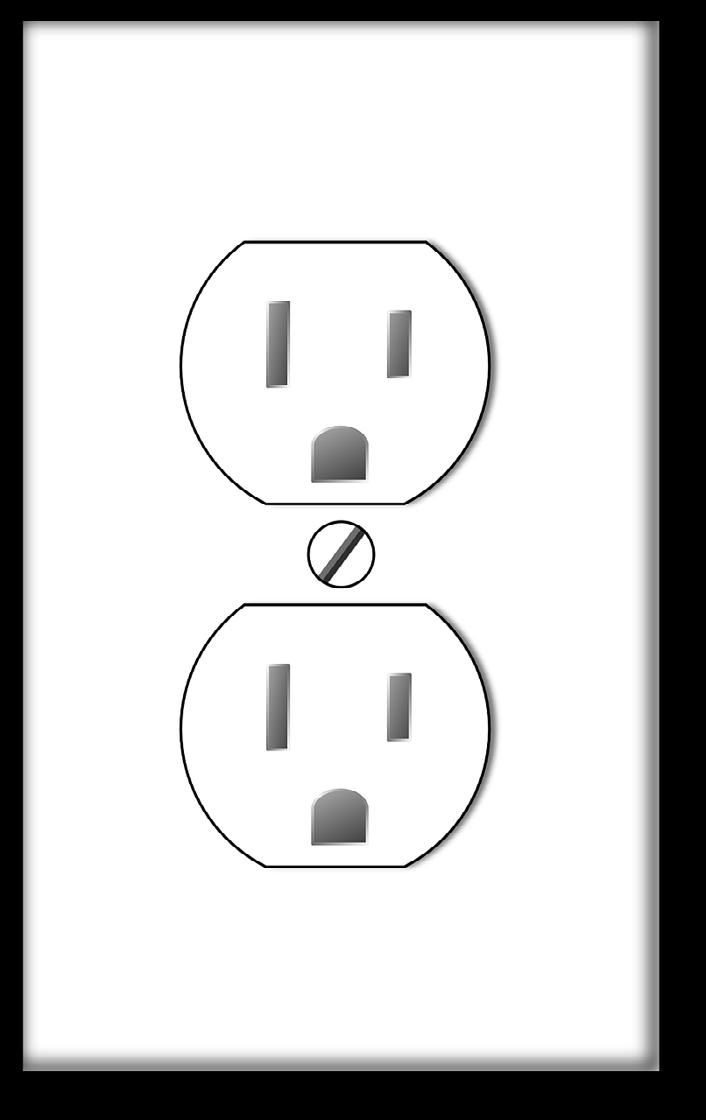


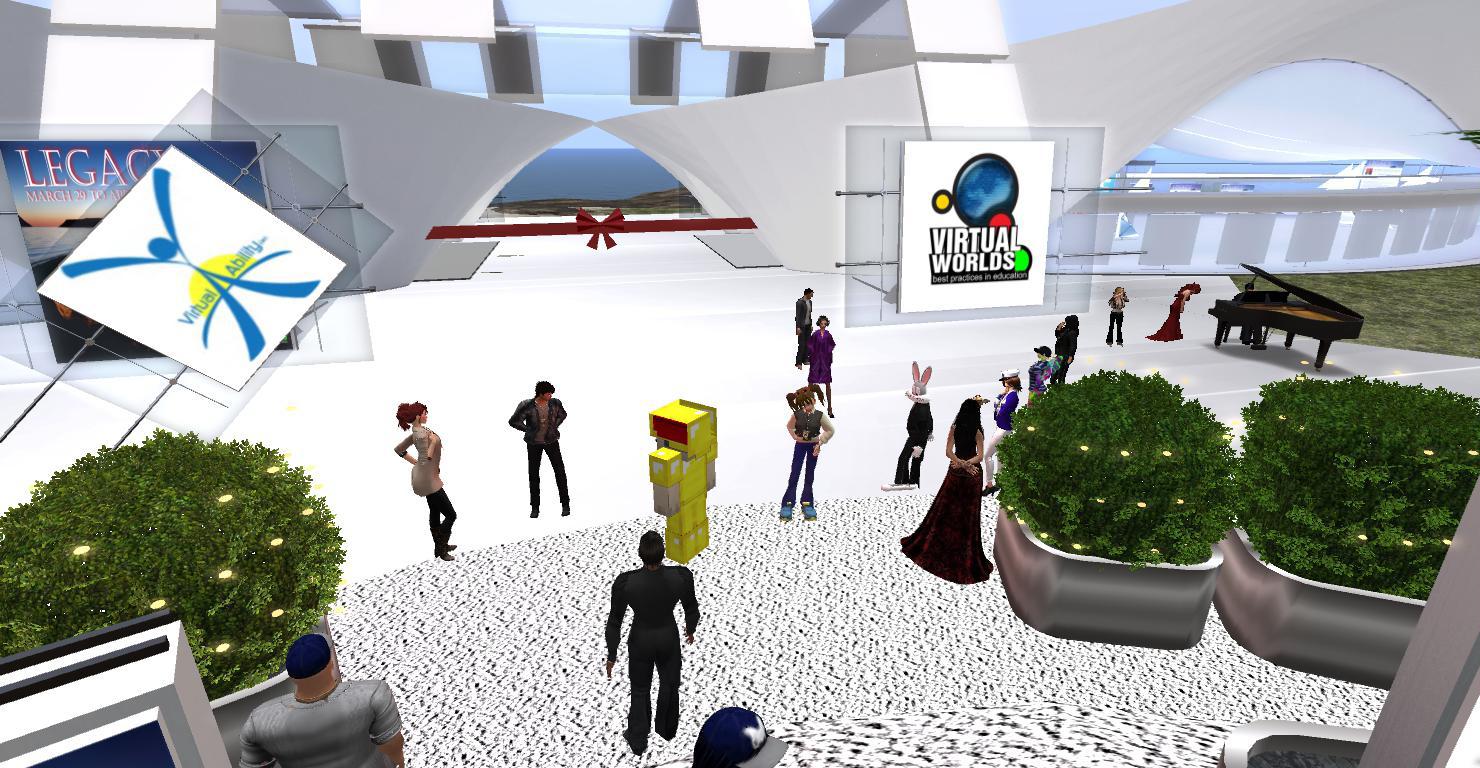
Opening Ceremony Ribbon Cutting. Let the FUN begin!


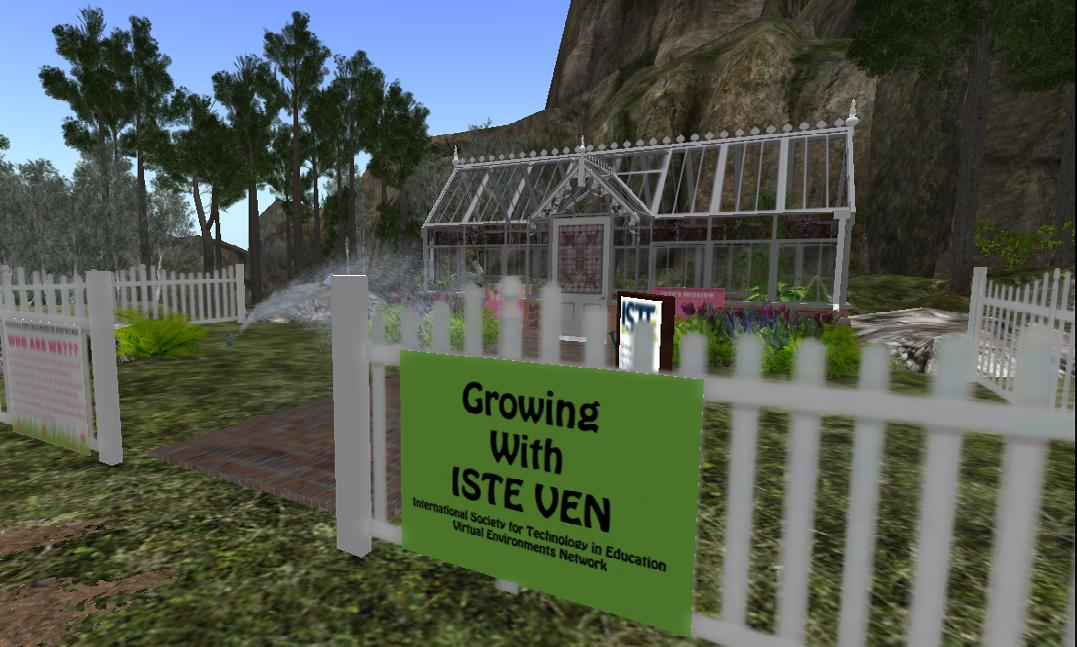
Social Area Locations
SocioI Building & Pl01O
12-lnlo Bar
13 Socialhent Schedule
G1 • Gondolo Stop
H1 - Plaza GreedyGame
H2 • Atrium
E1 - EntertainmentArea
R• Undeiwater Scooter Ride
TP• leleport Map
U • Unde,lh@SeaEnl!ance
Mount legacy
G2 Gondola Stop
HJ • Overlook, Hang Gilding
H4 - Campfire
Ught house Point
G3 • Gondola Stop H7• avthe sea
Under the Seo
E2- Octopus ' s GoldenPalladium
HS·Mertolk Arena
Pl - l@mple
P2 - SunkenShp
P3 Sailors' GraveyaId
Frttb lts Mertolk frHb it Store
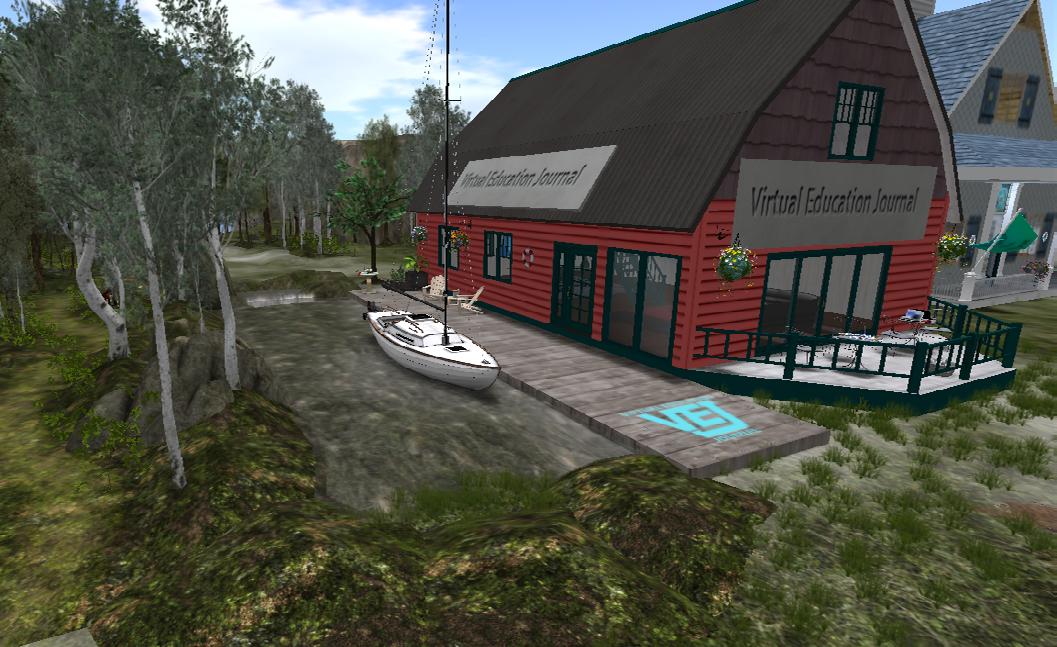
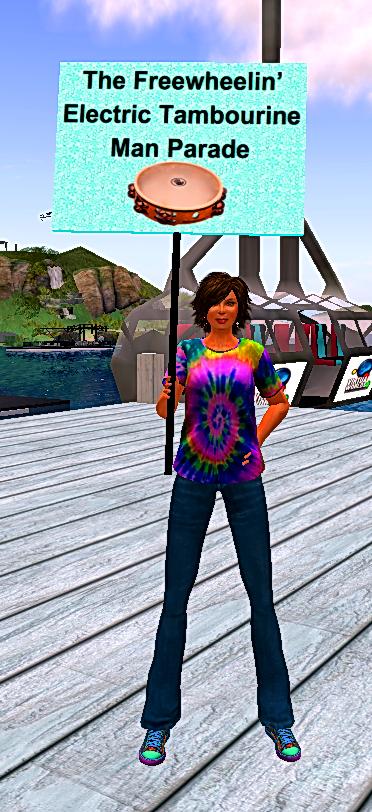
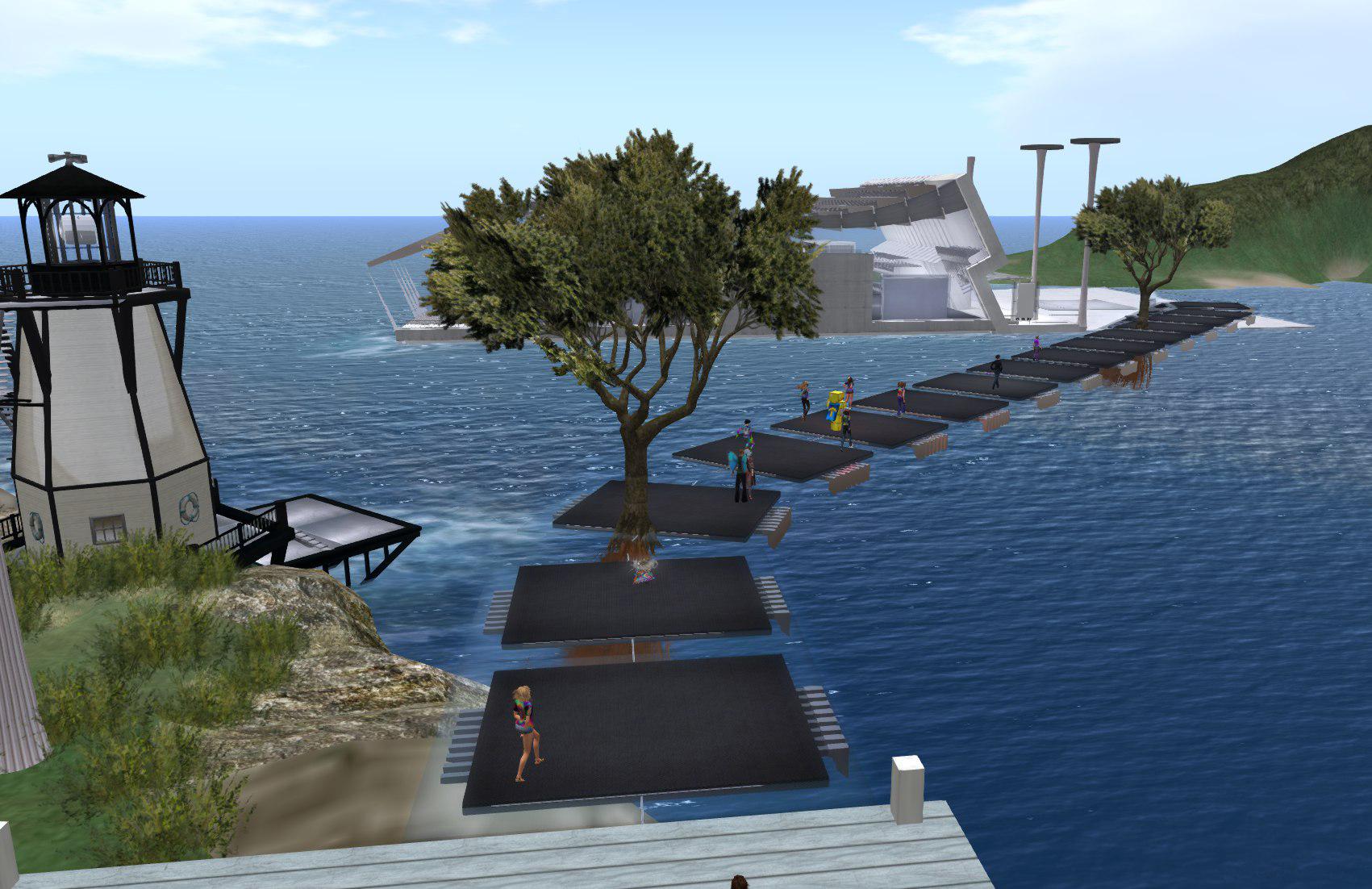



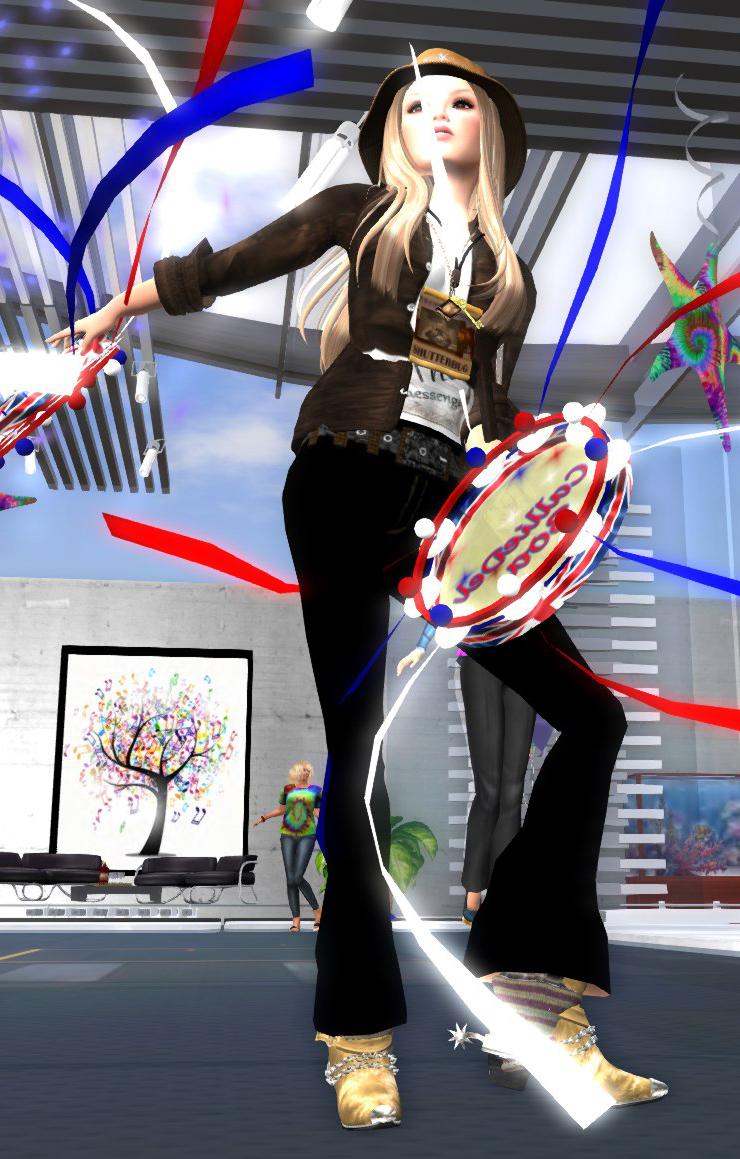


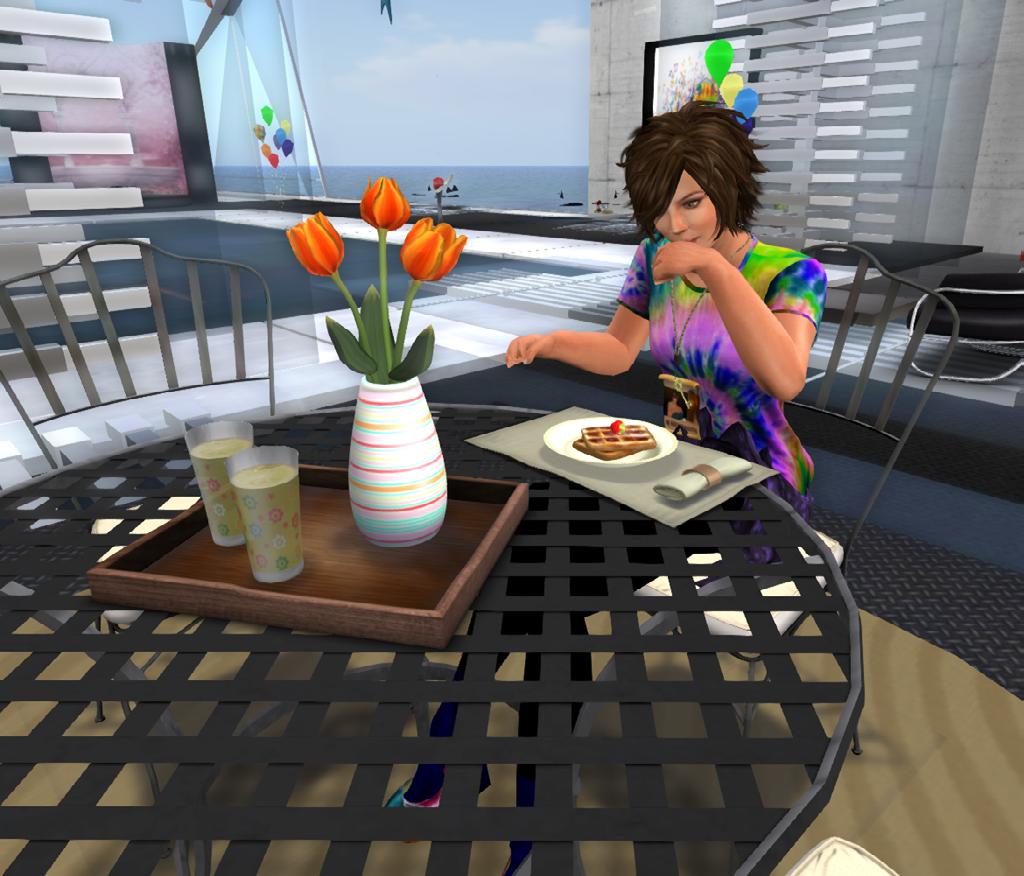


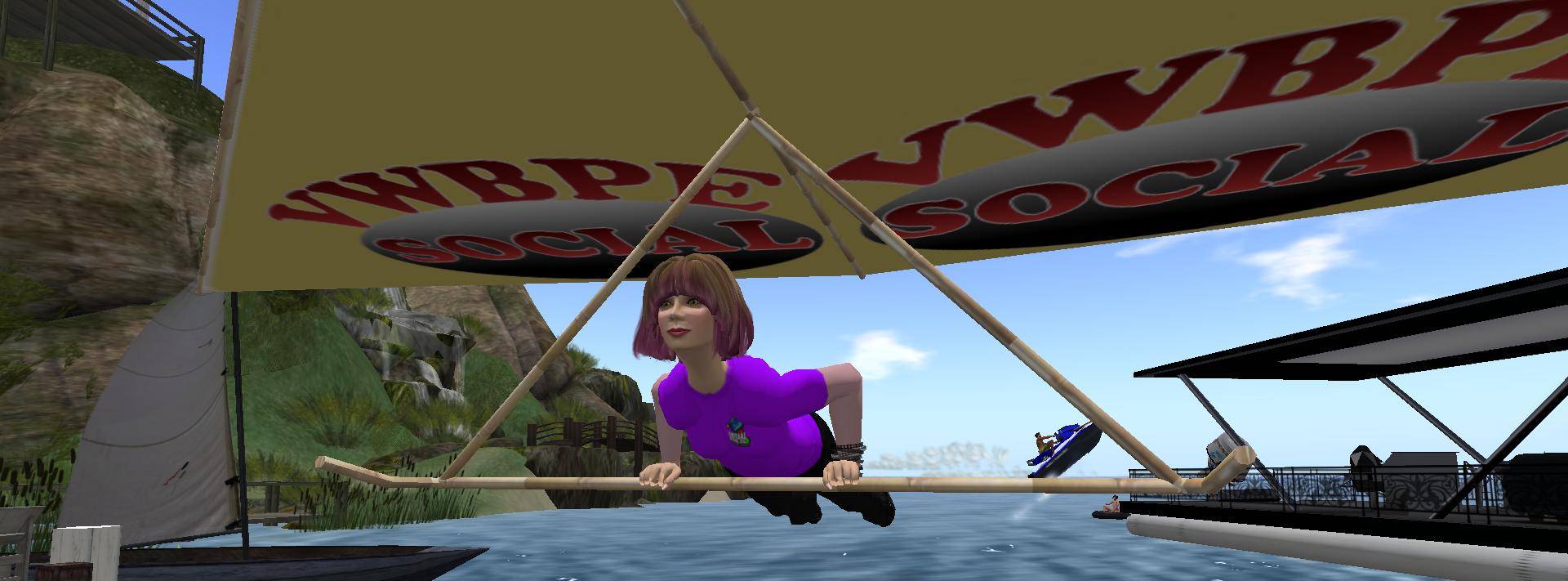
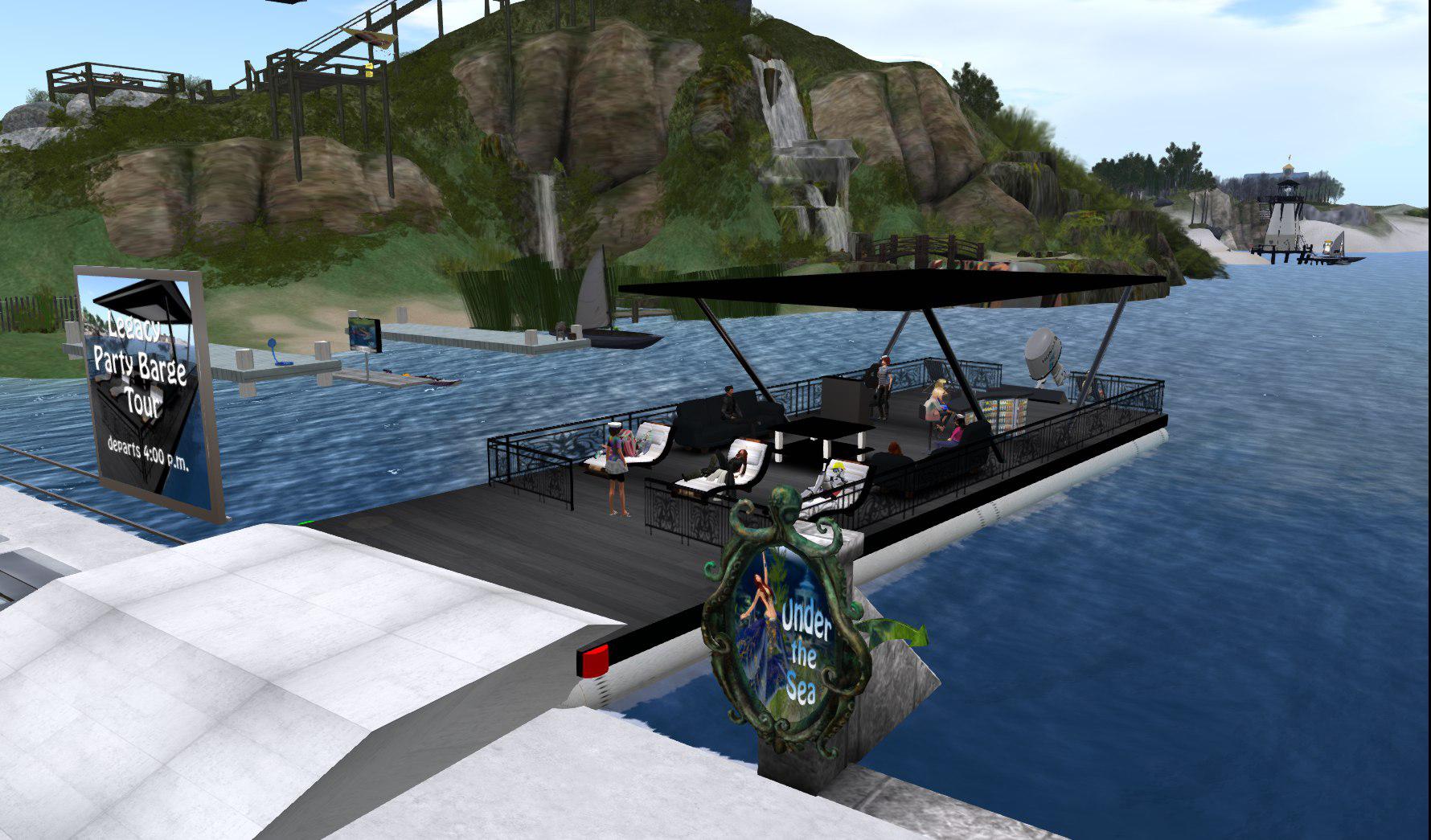

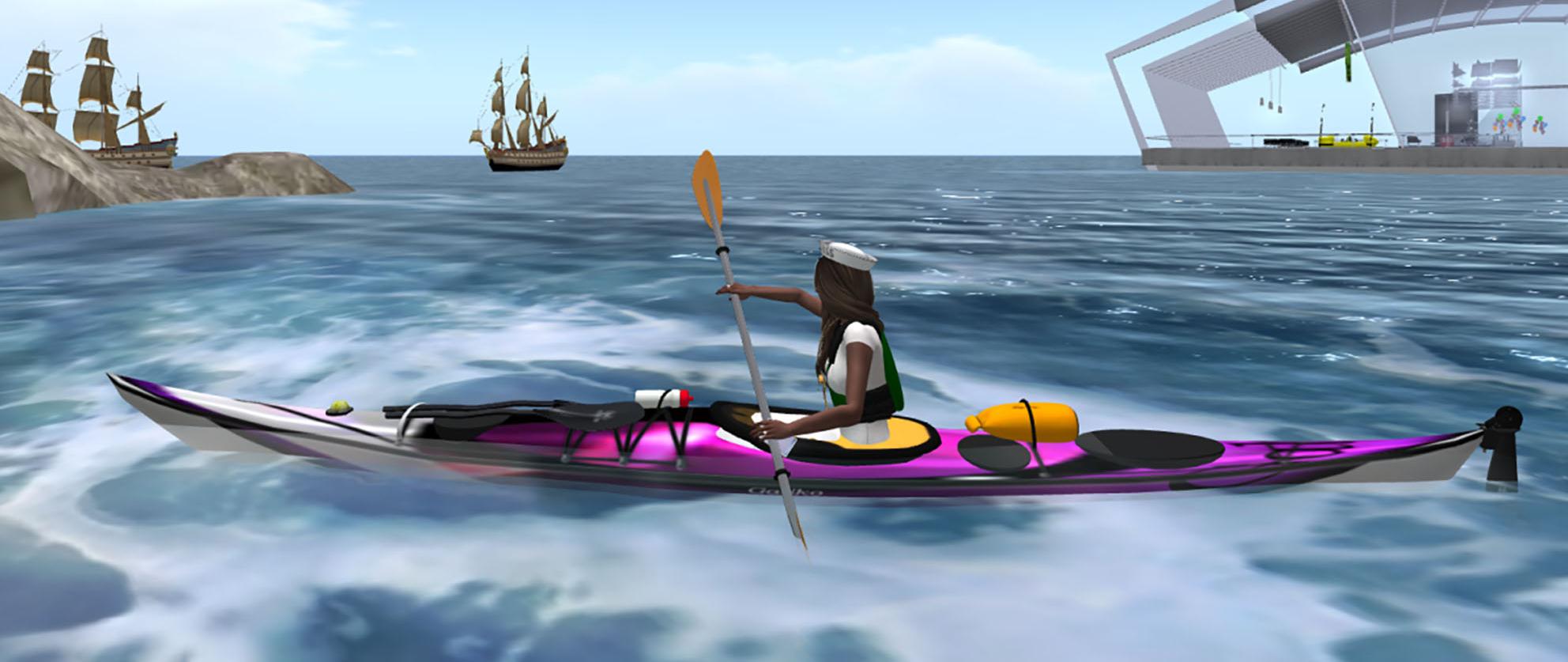

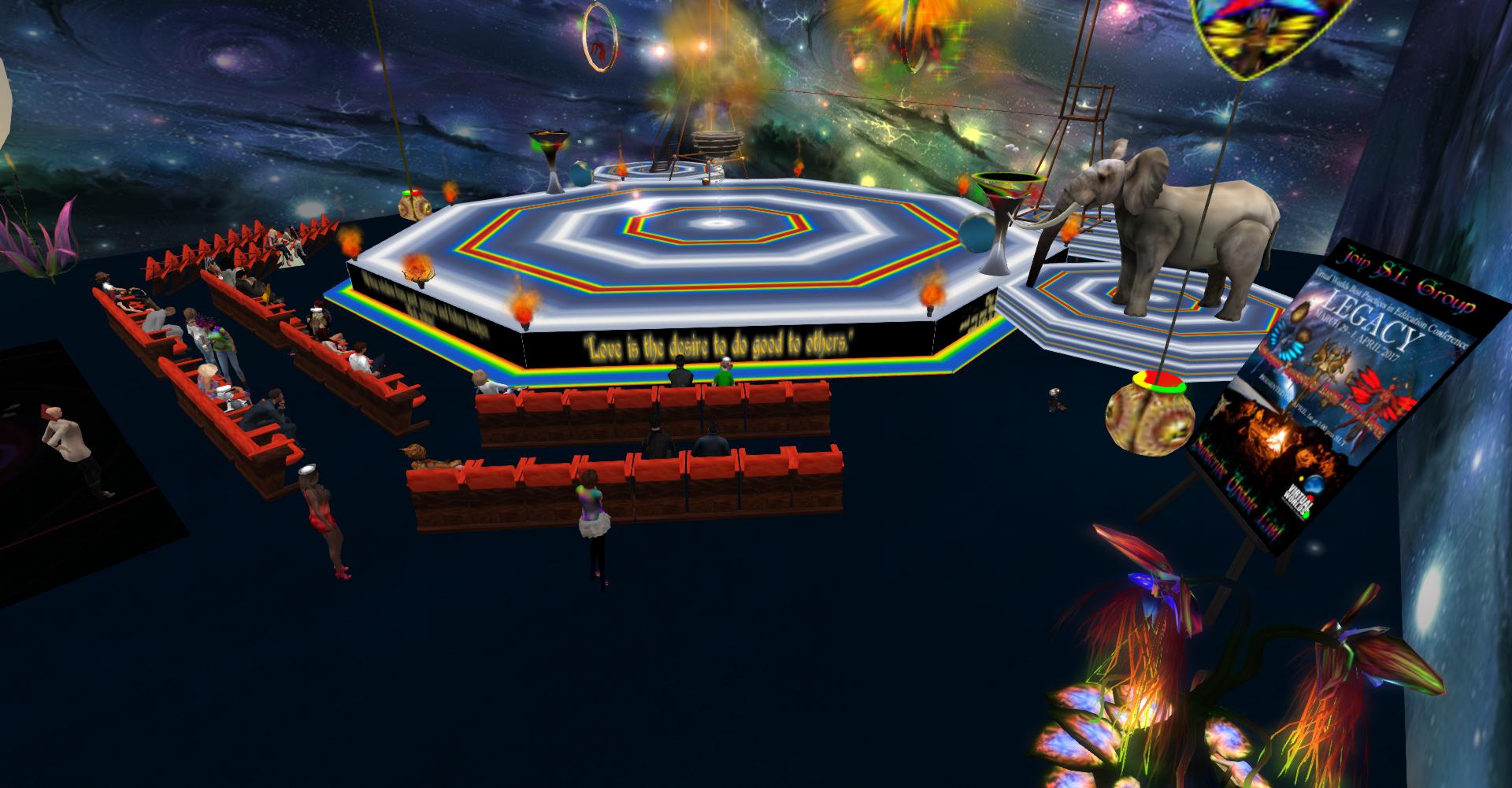














We are always looking for educators (and even their students) to share what they/you are doing in virtual environments, the curricula/strategies/assessments they/you are using, how they/you engage students differently in virtual environments, and most importantly the take-aways - that is what are they/you learning about best practices that can be shared with others?
We are interested in Pre-K - 16, and Pre-service Teacher education programs through graduate school and professional learning personal and group activities. We are also interested in how other professions and organizations (e.g., medical, engineering, non-profits, parks & recreation) are using virtual spaces for professional learning, simulations, role-play and other training activities. We also welcome articles from artists, designers, musicians, and authors who are using virtual environments to further their craft.
The theme for our summer issue will be “Children of the Metaverse.” By children we are talking about any of us who are celebrating our 14th Rez Day (along with Second Life) and everyone younger, including newbies. Metaverse children can be any age in real-life but they are still children in the metaverse – although hard to believe, some are entering puberty if they rezzed 14 years ago.
Even though we usually announce a special theme, we still include other articles about learning and game-play in virtual worlds - especially articles that promote the effective use of virtual environments to enhance and engage teachers and students in quality learning experiences. Please submit articles, approximately 500 – 1800 words (font and size do not matter). We love lots of pictures. Please be sure your pictures and

graphics are the highest resolution possible (using png, tiff, jpeg). Include any captions you would like to have with the pictures. You may place pictures/graphics in article so we see where or how you would like them placed. But, please be sure to also send you highest quality pictures/ graphics in separate files.
Send your article submission to: rvojtek@edovation.com or rovojtek@gmail.com
Be sure to put “VEJ” in subject line.
You may submit articles and pictures at any time. We publish four issues of VEJ per year (i.e., Summer, Winter, Fall, Spring). If you have questions, email rvojtek@edovation.com or give Roxie Neiro (sl) a notecard in second life.
You can find more information a nd see previous issues of VEJ at www.virtualeducationjournal.com and at issuu.com/edovation .
We look forward to seeing your articles and pictures published soon in VEJ! Remember, VEJ is only as good as we all make it. Thank you for sharing your work and experiences with us.
Keep Smiling :)
Roxie Neiro (RL)
Rosie Vojtek (SL
